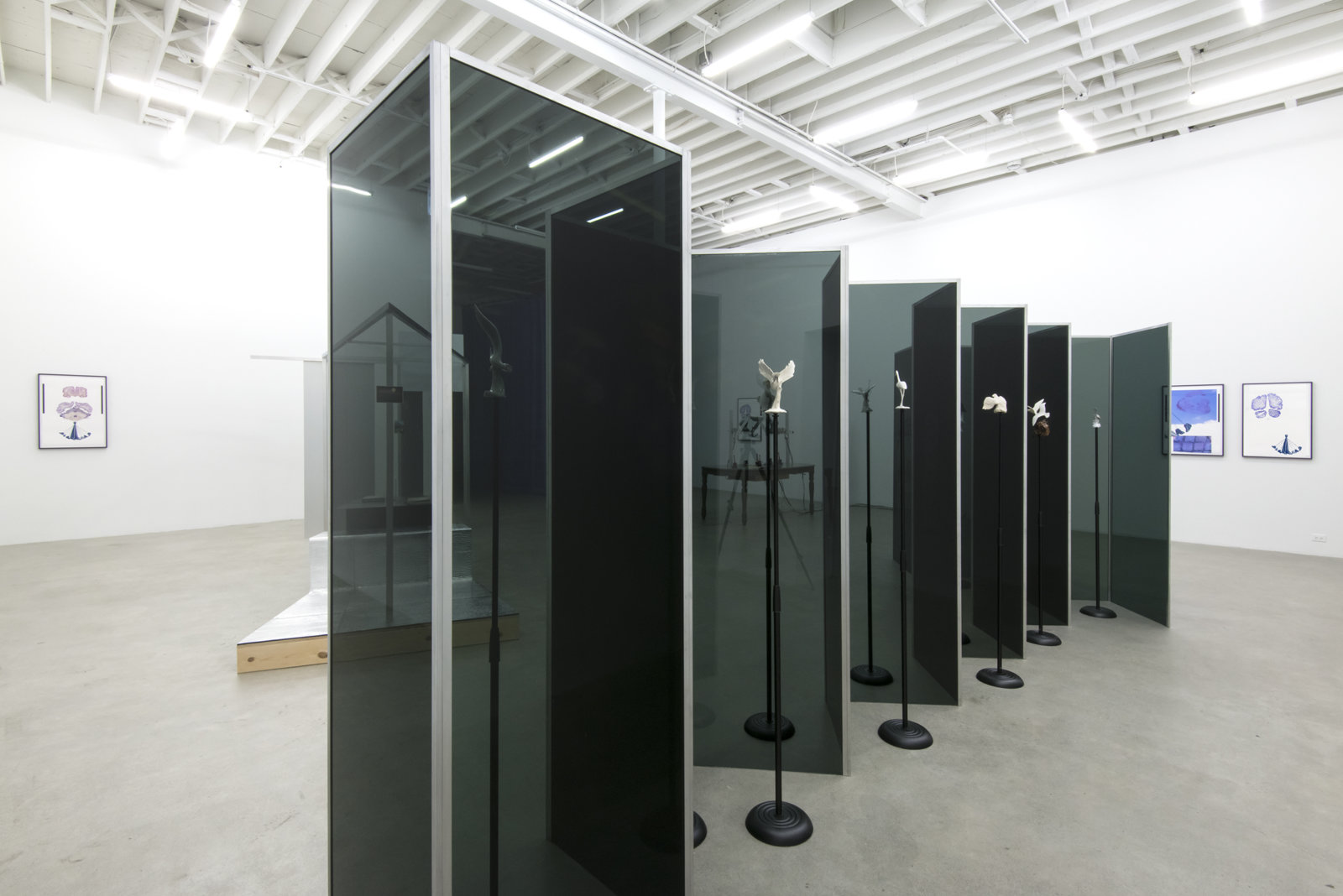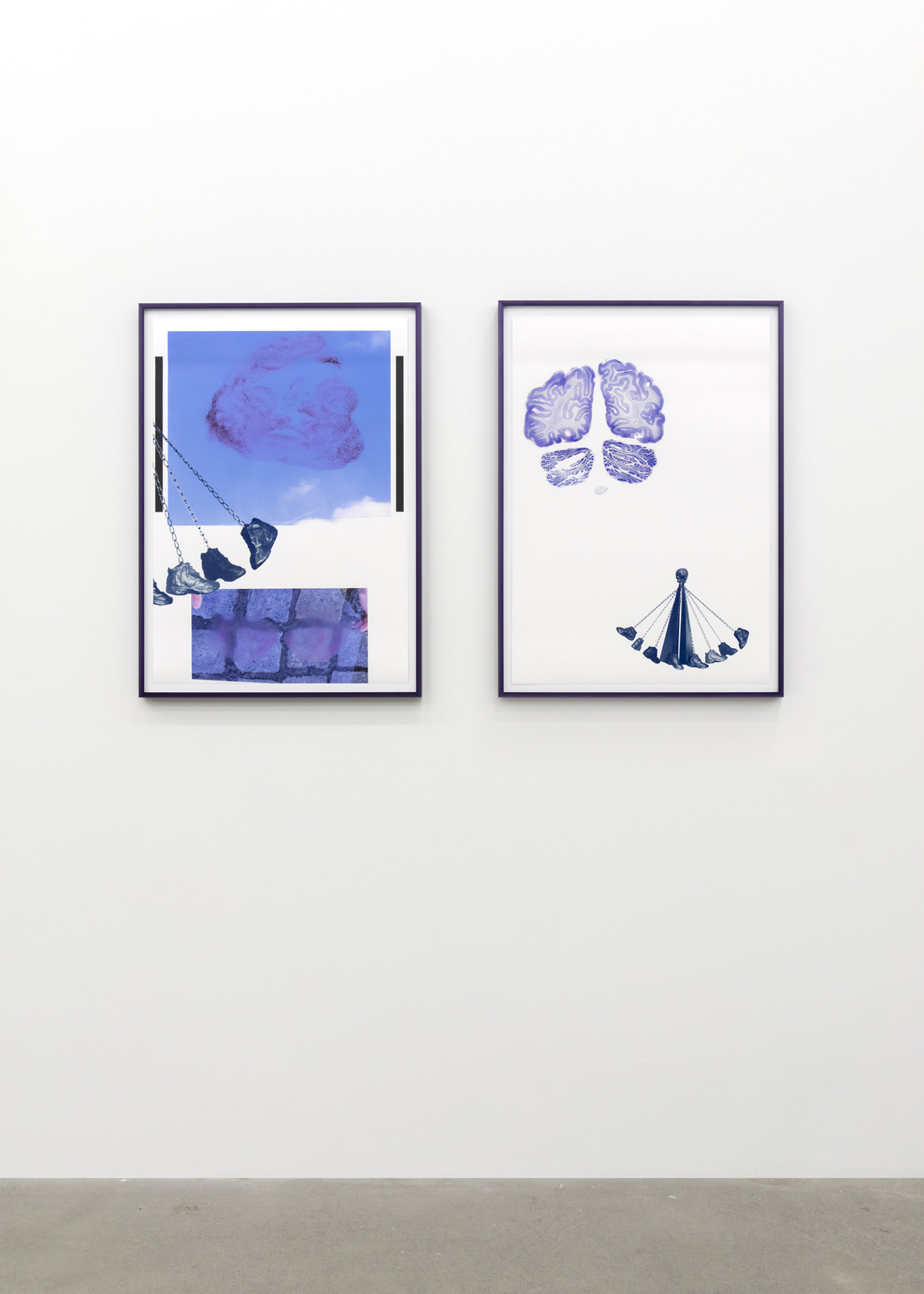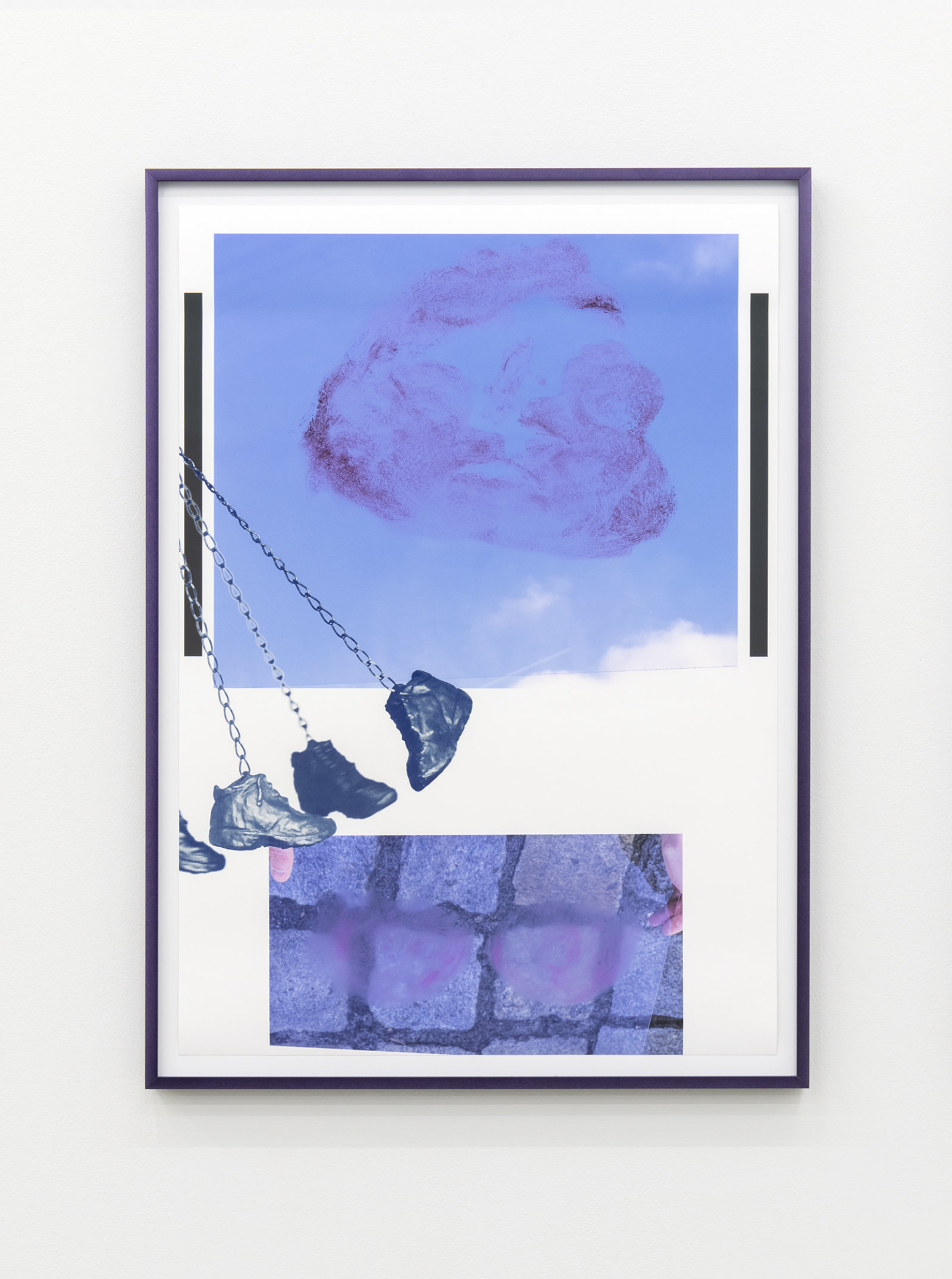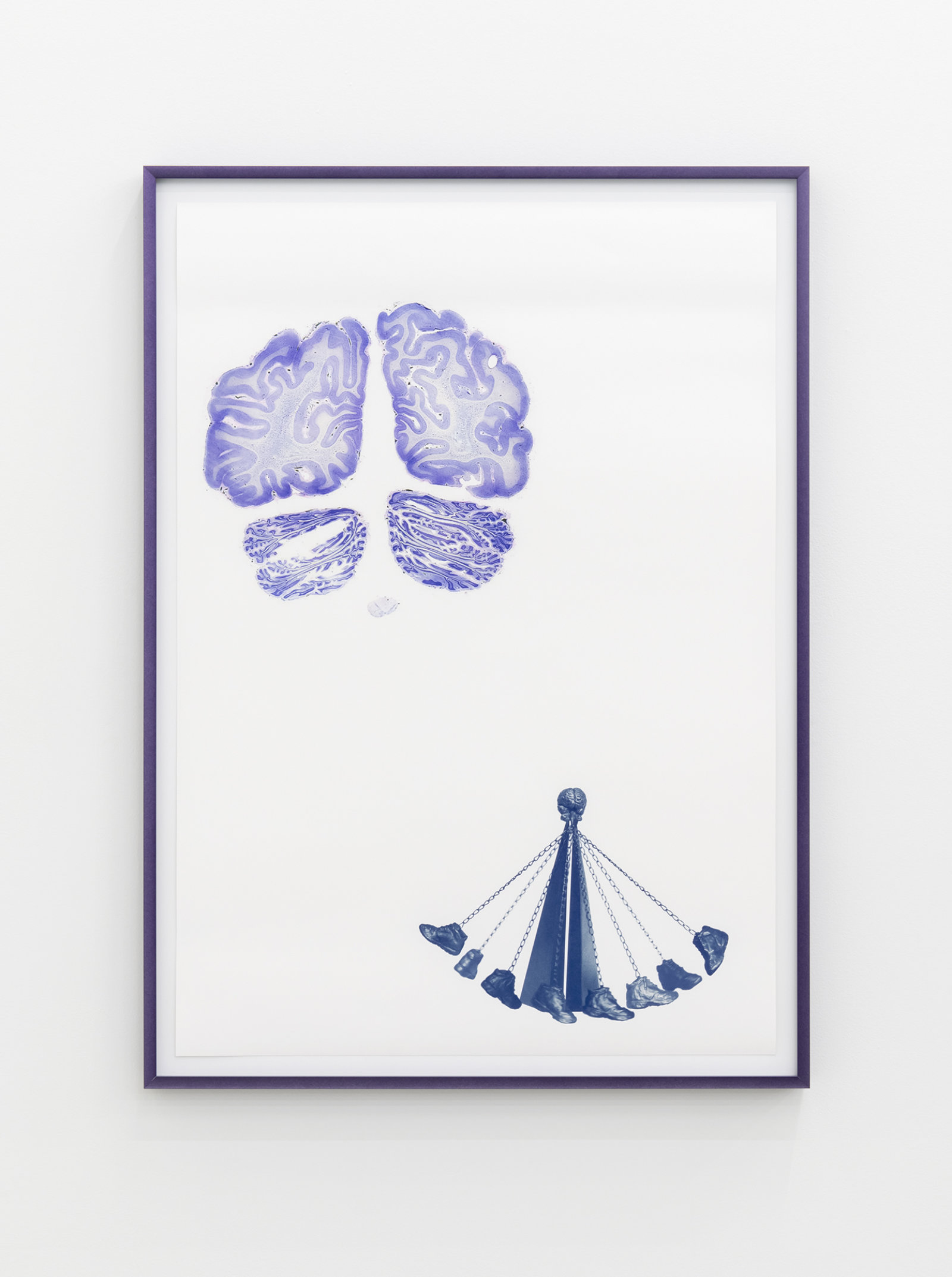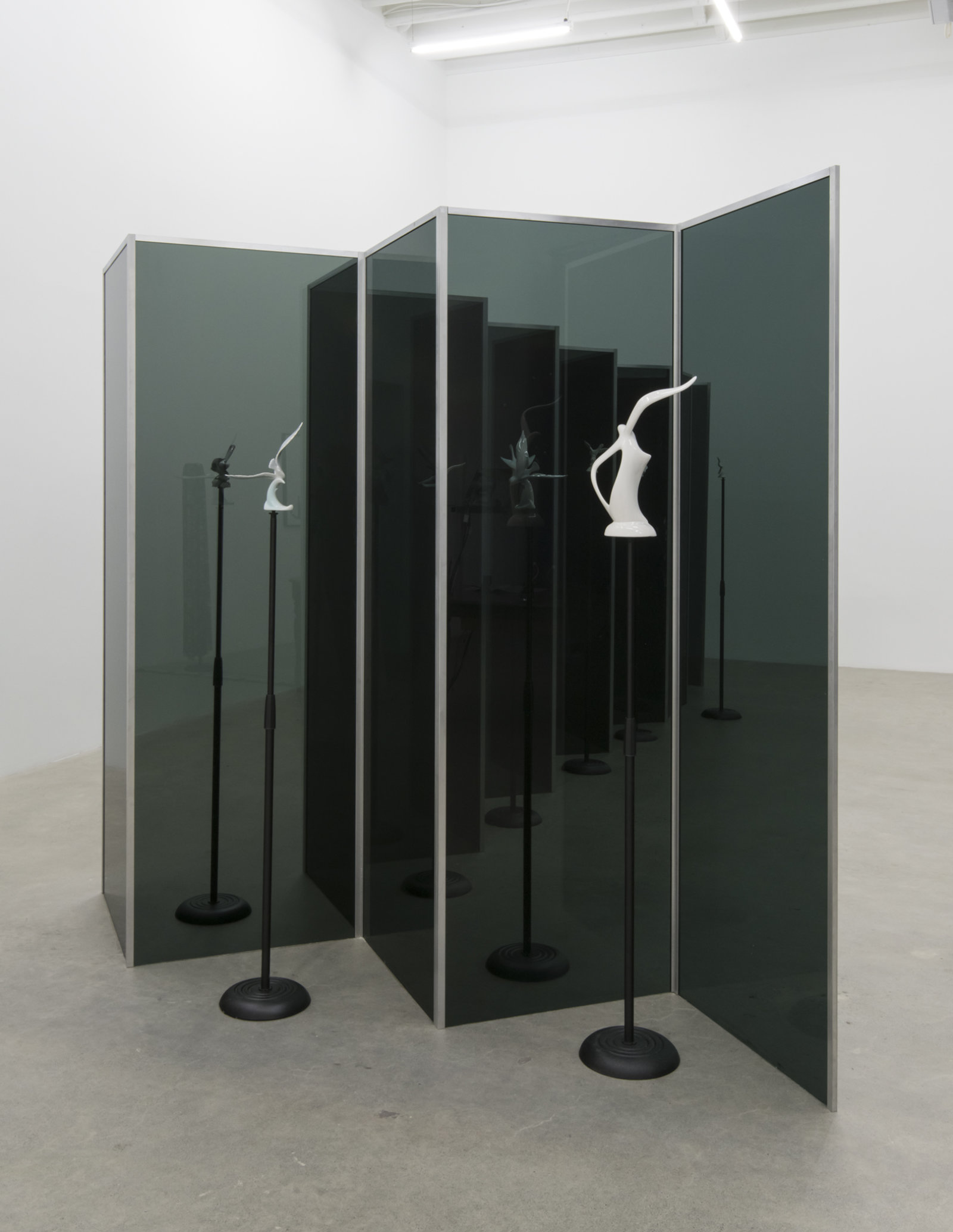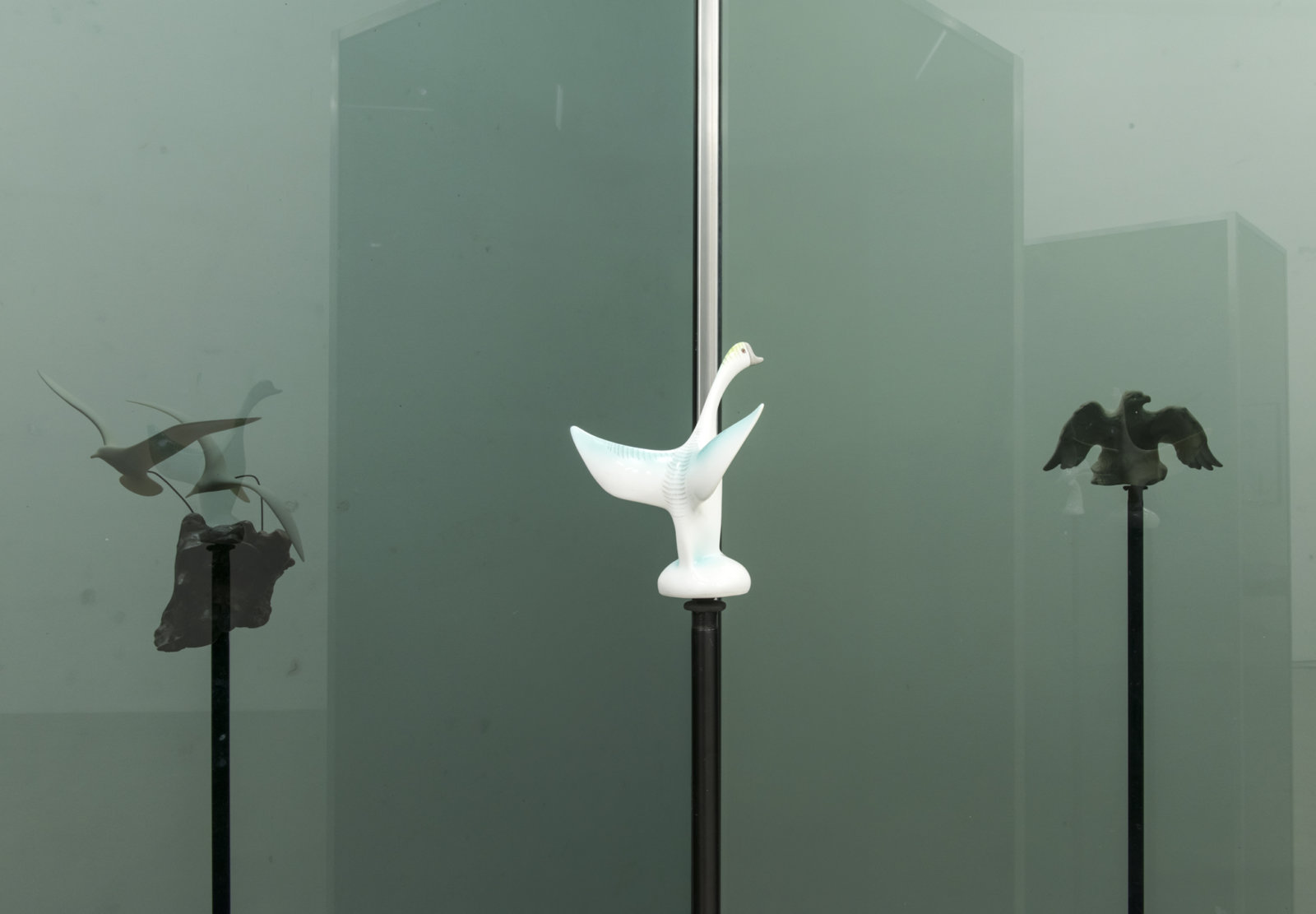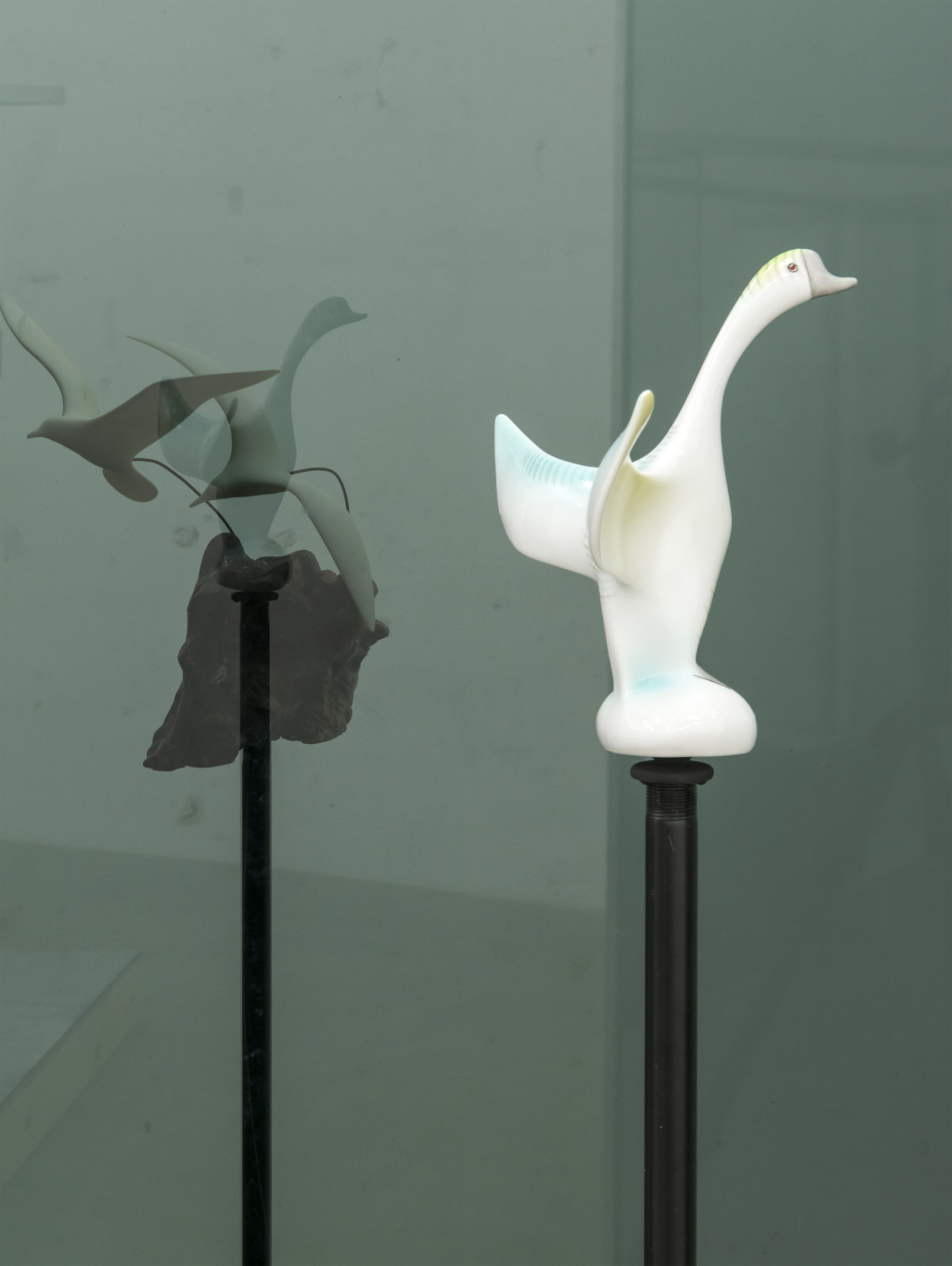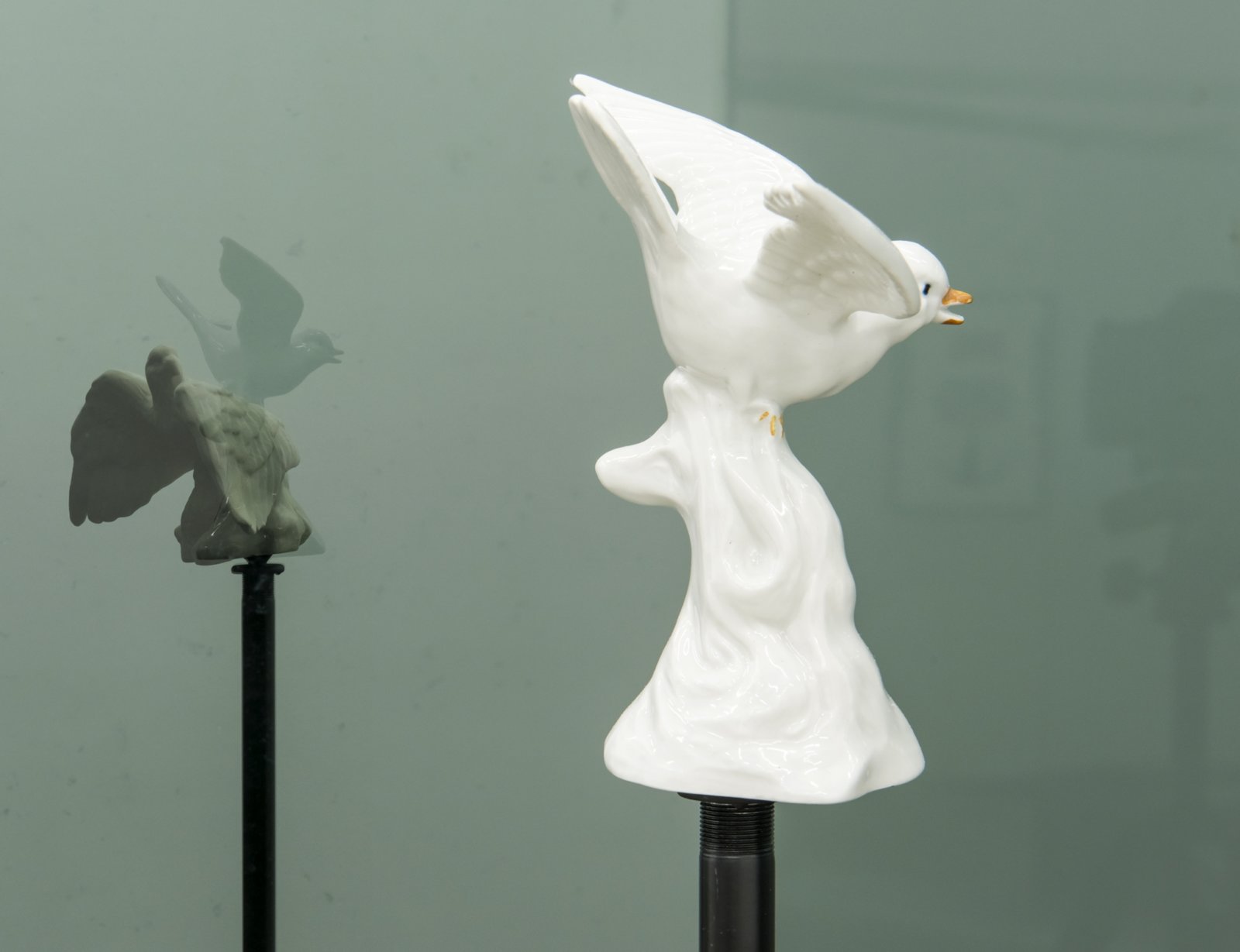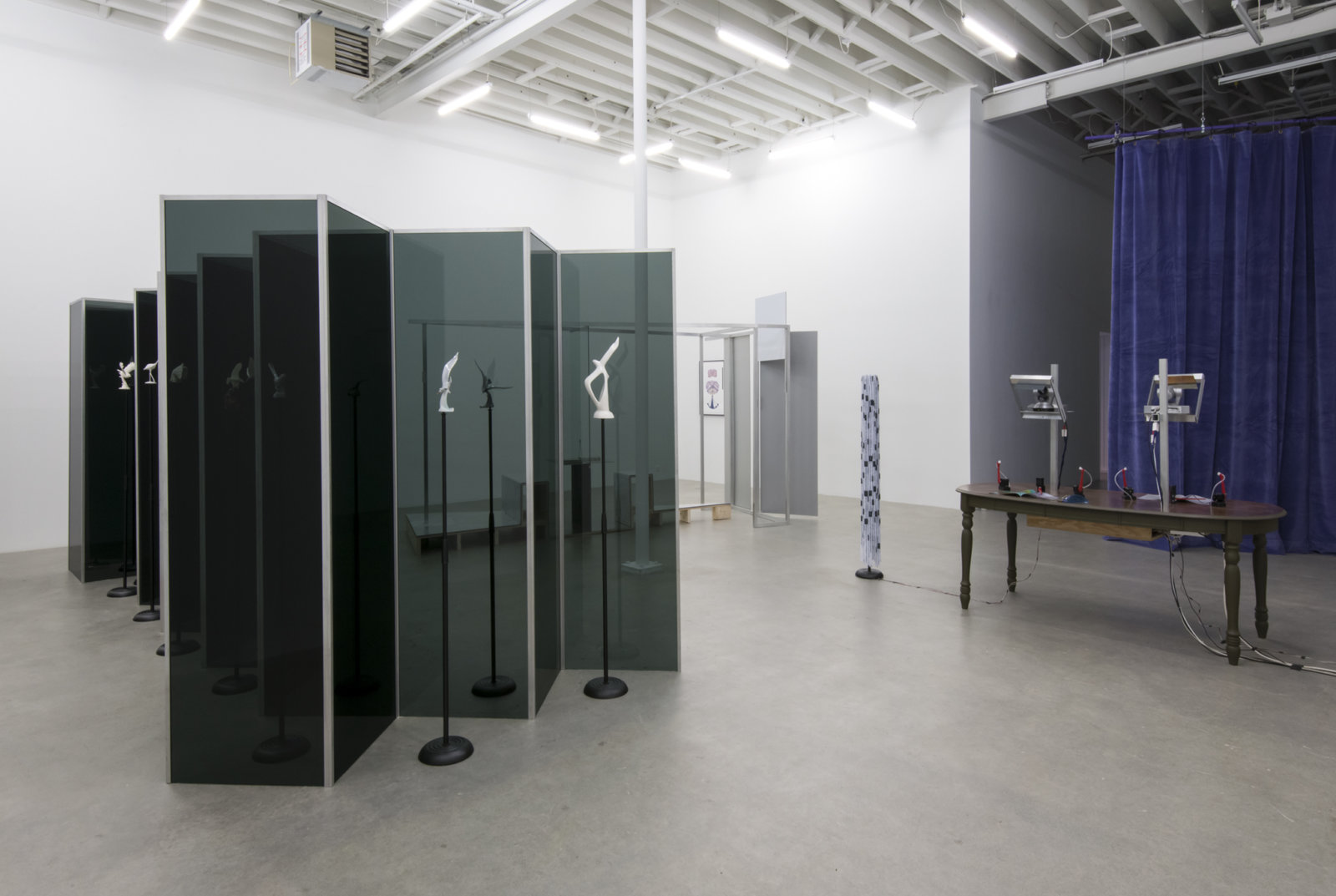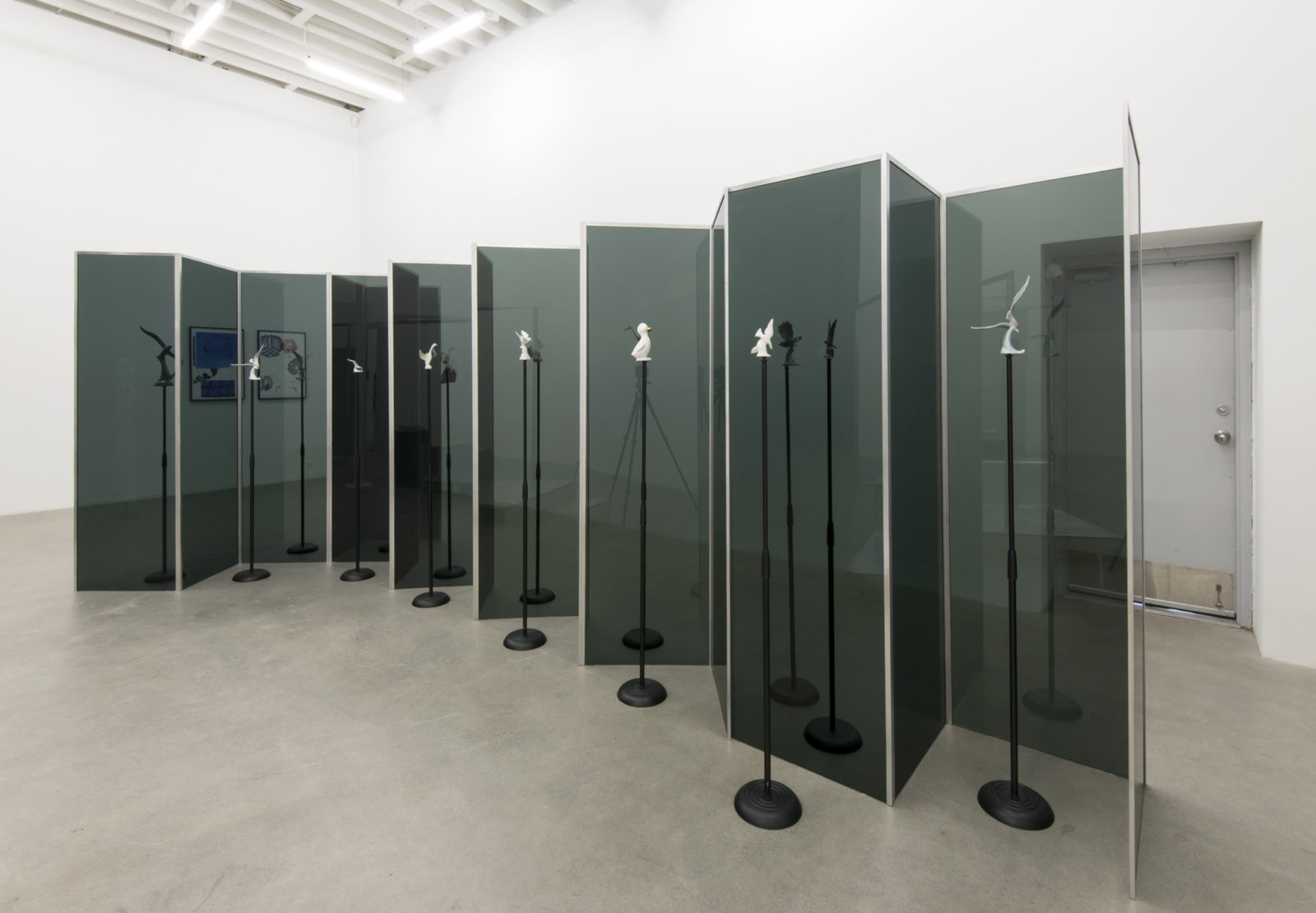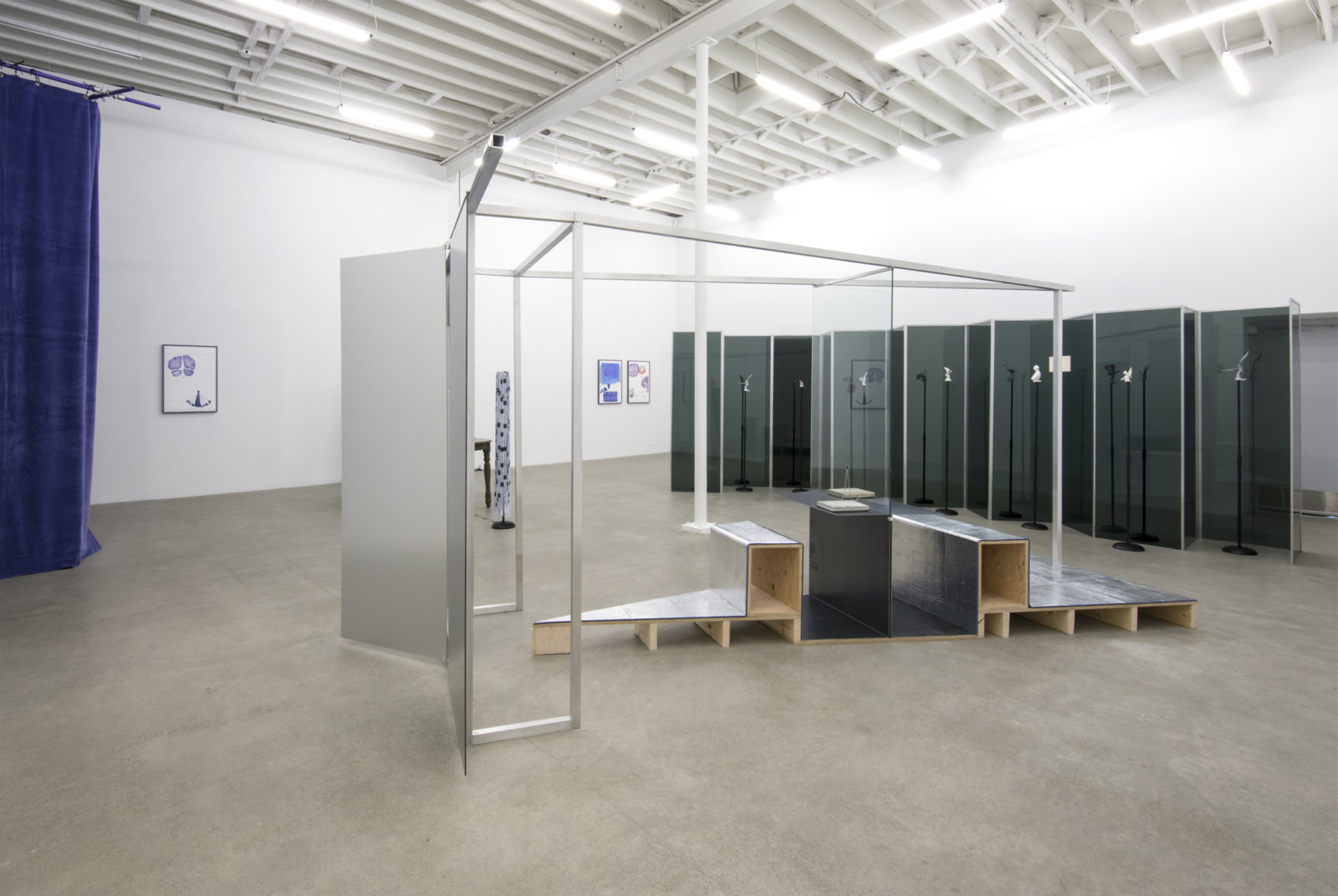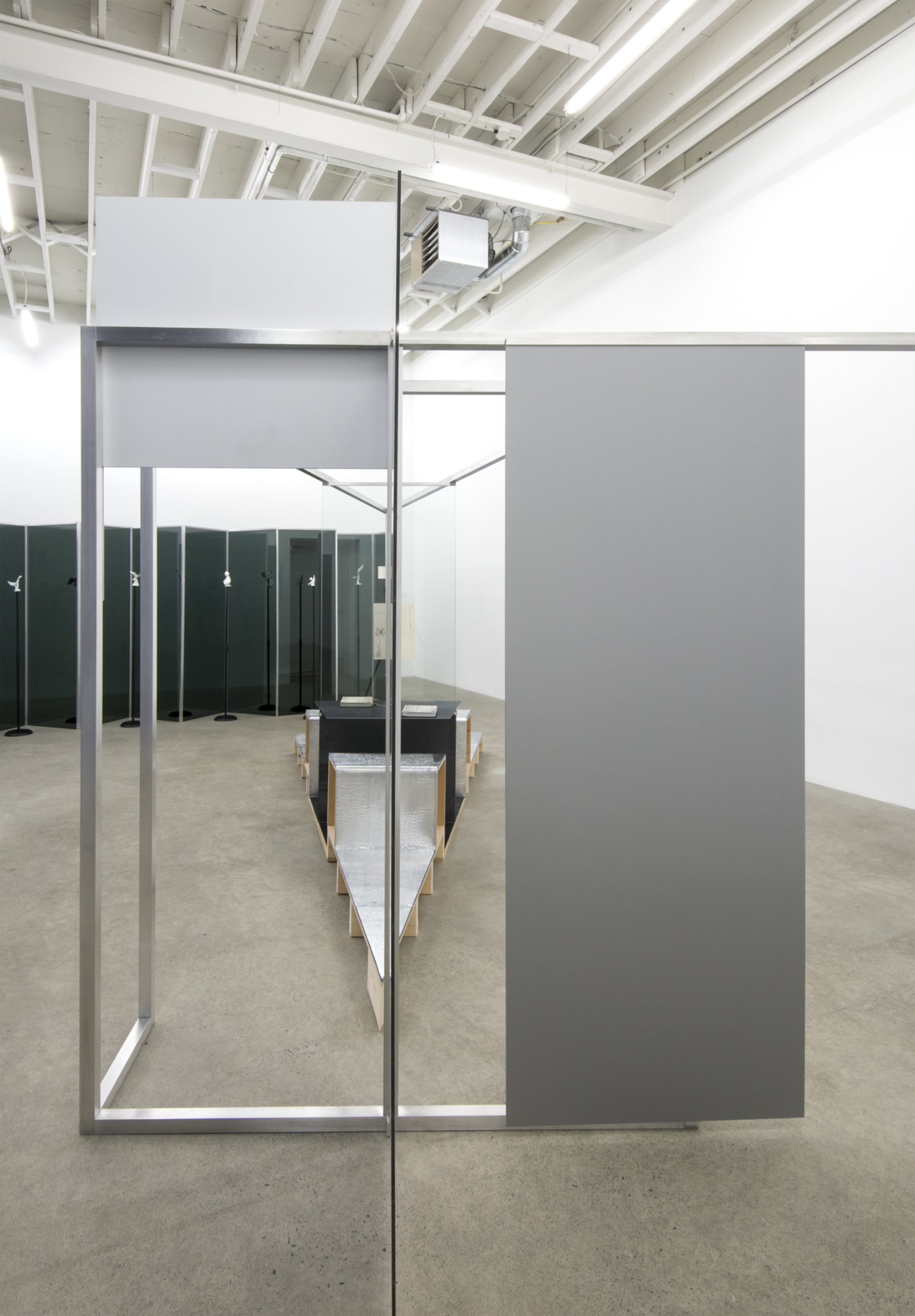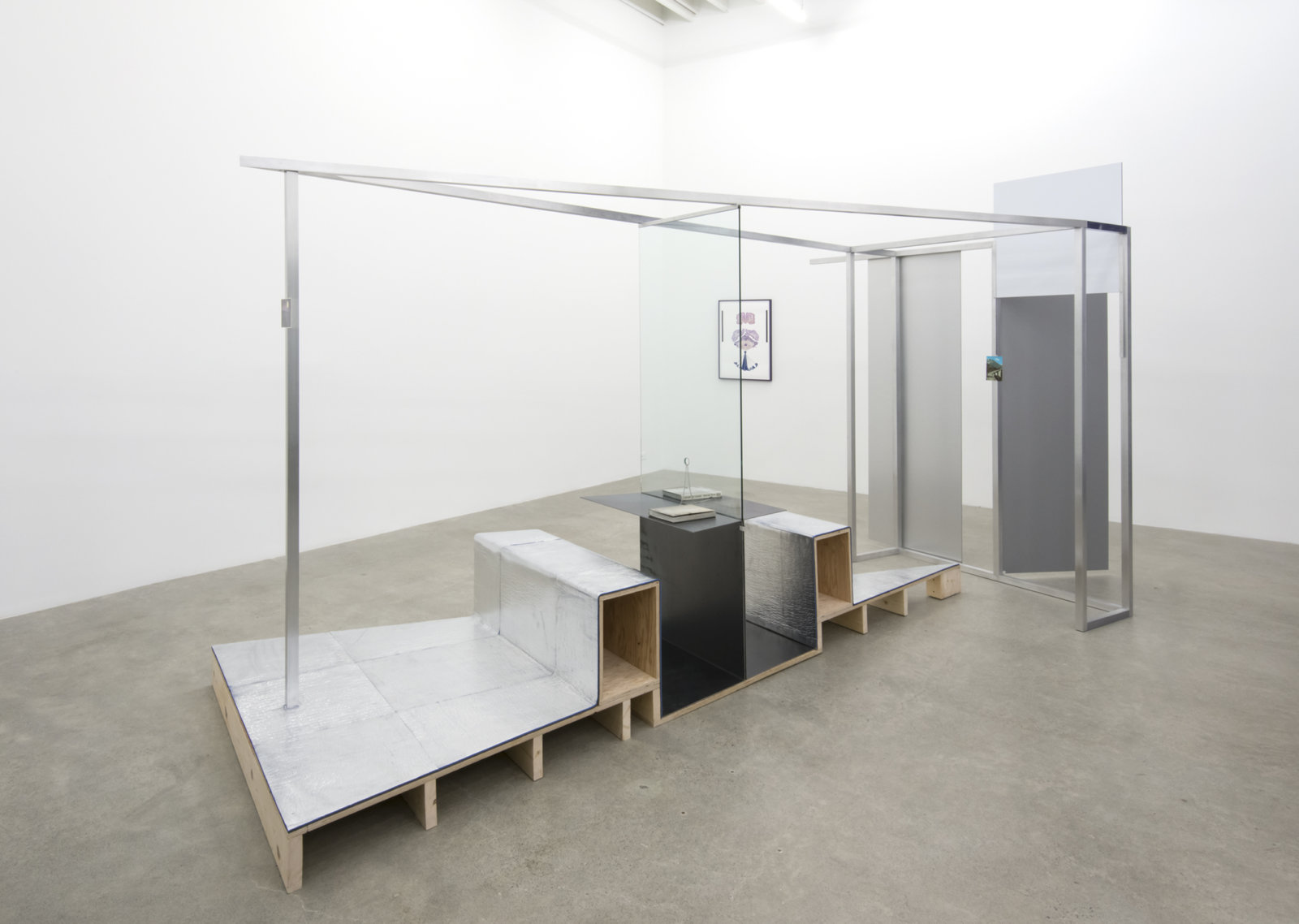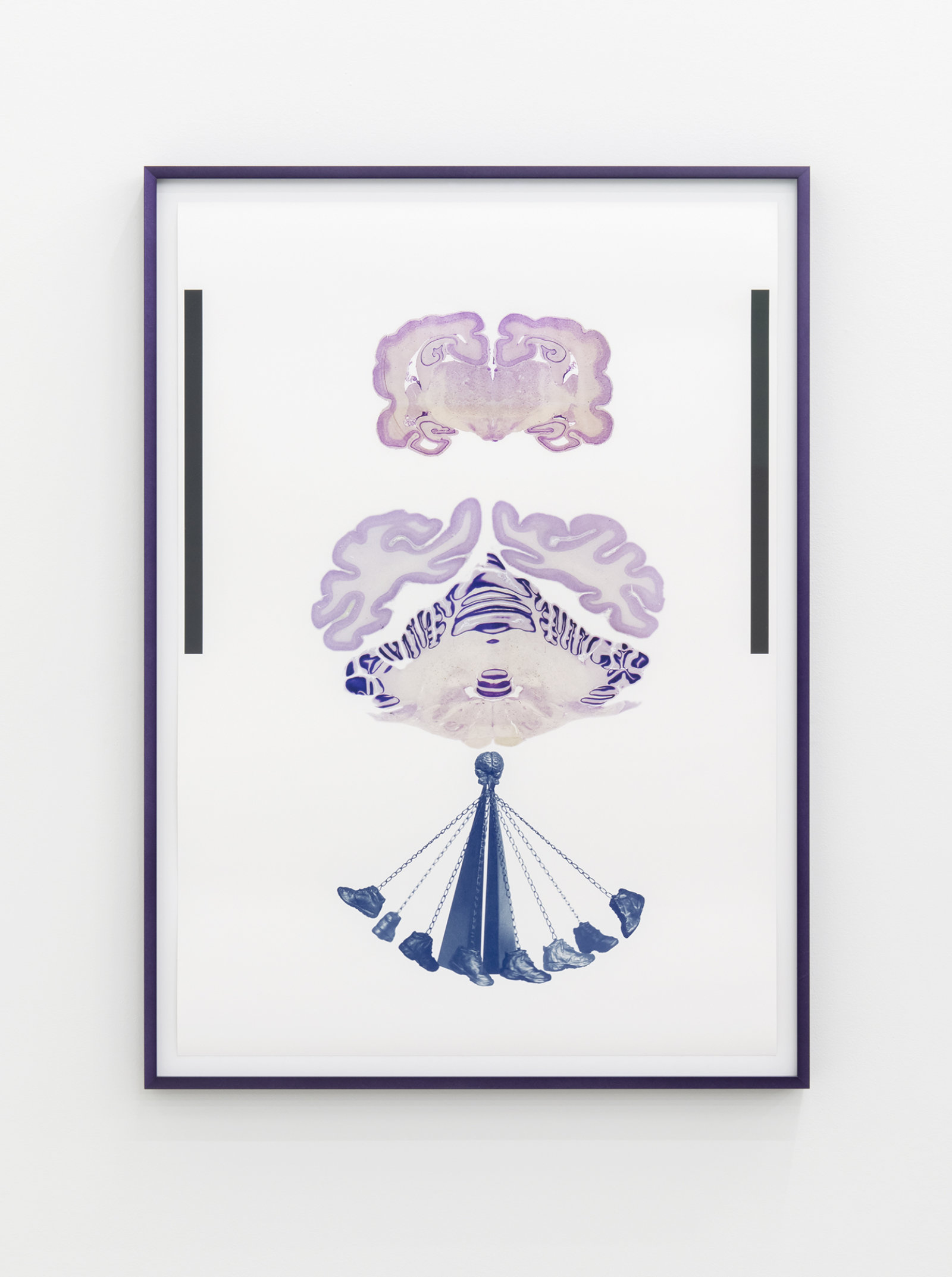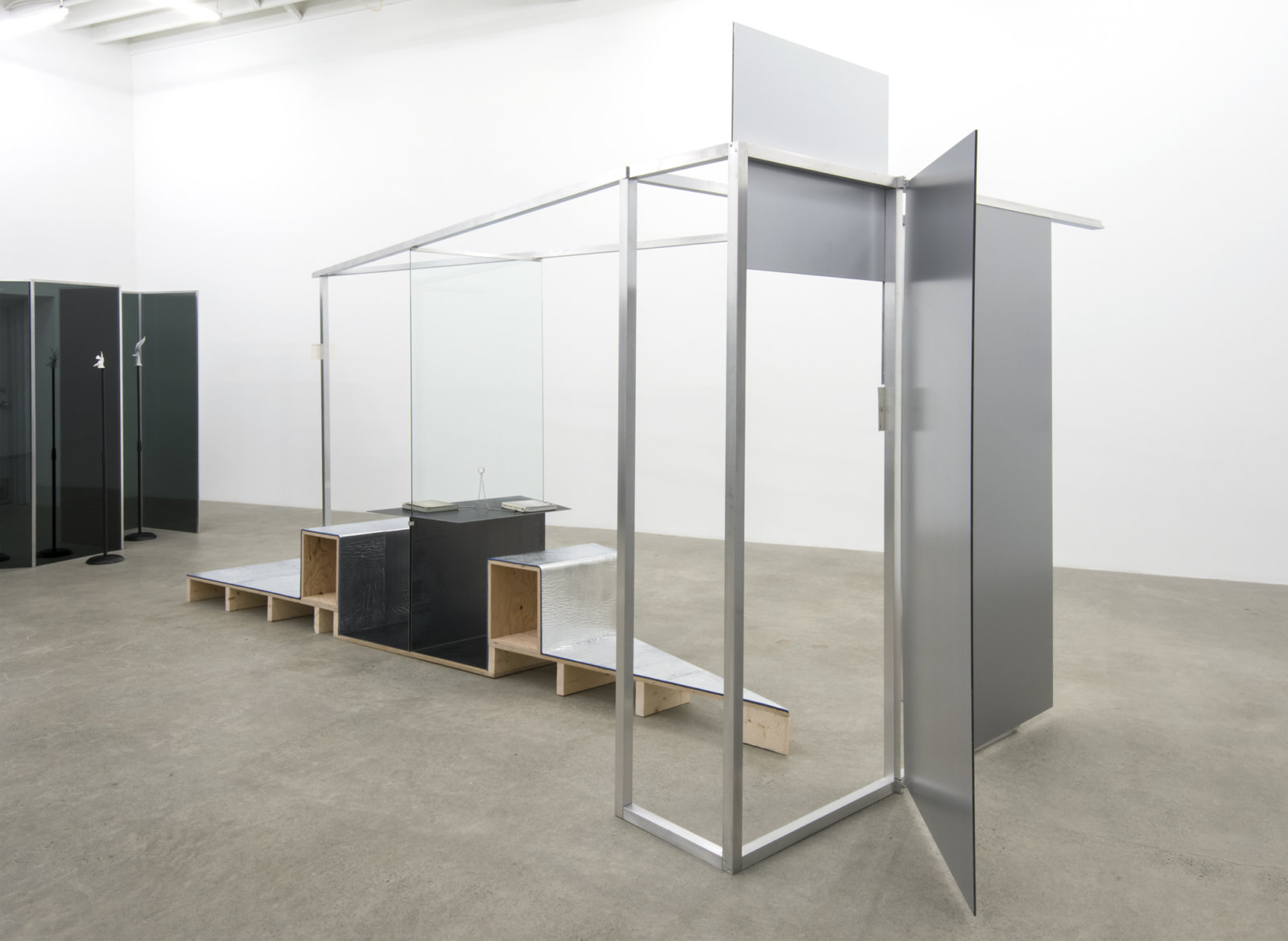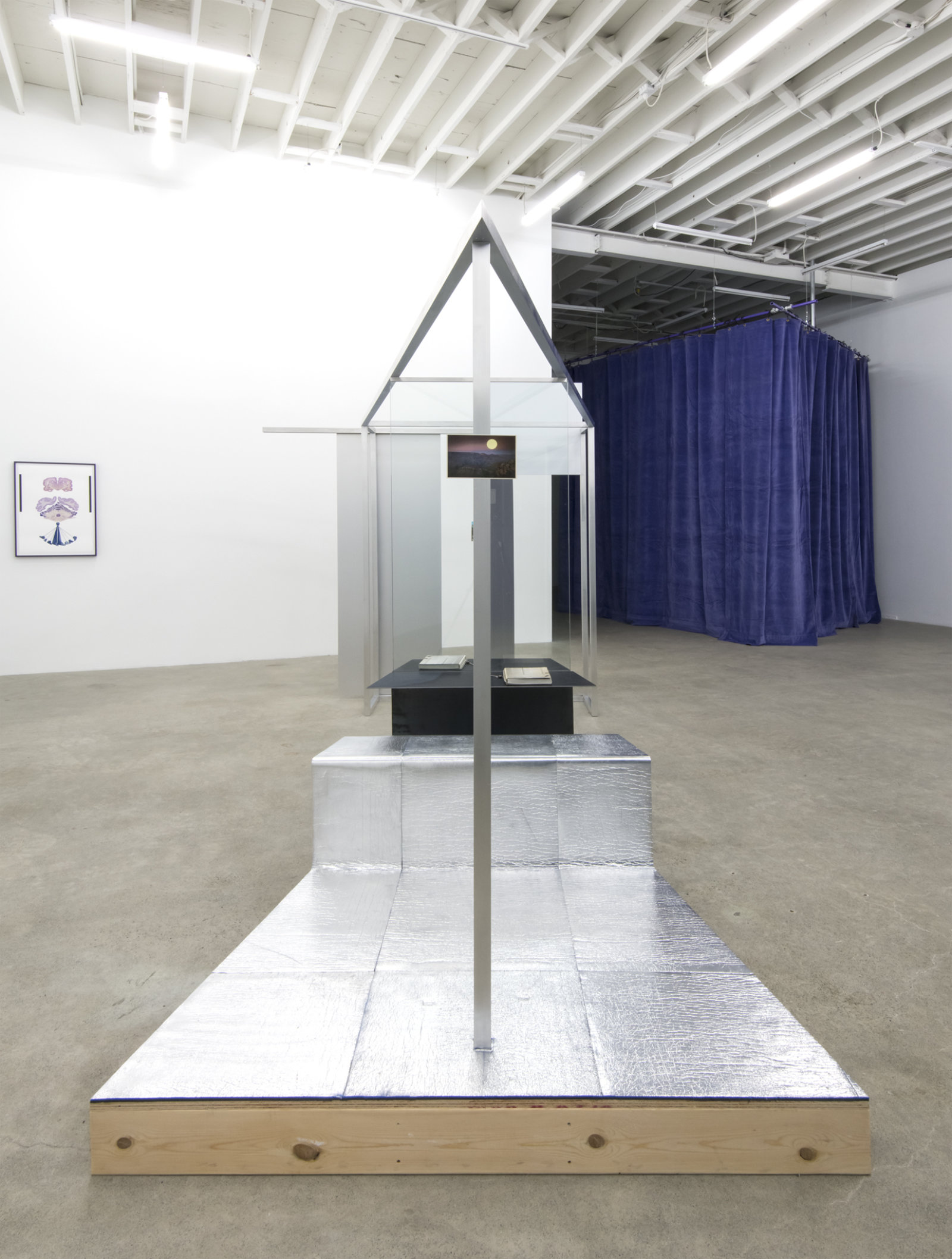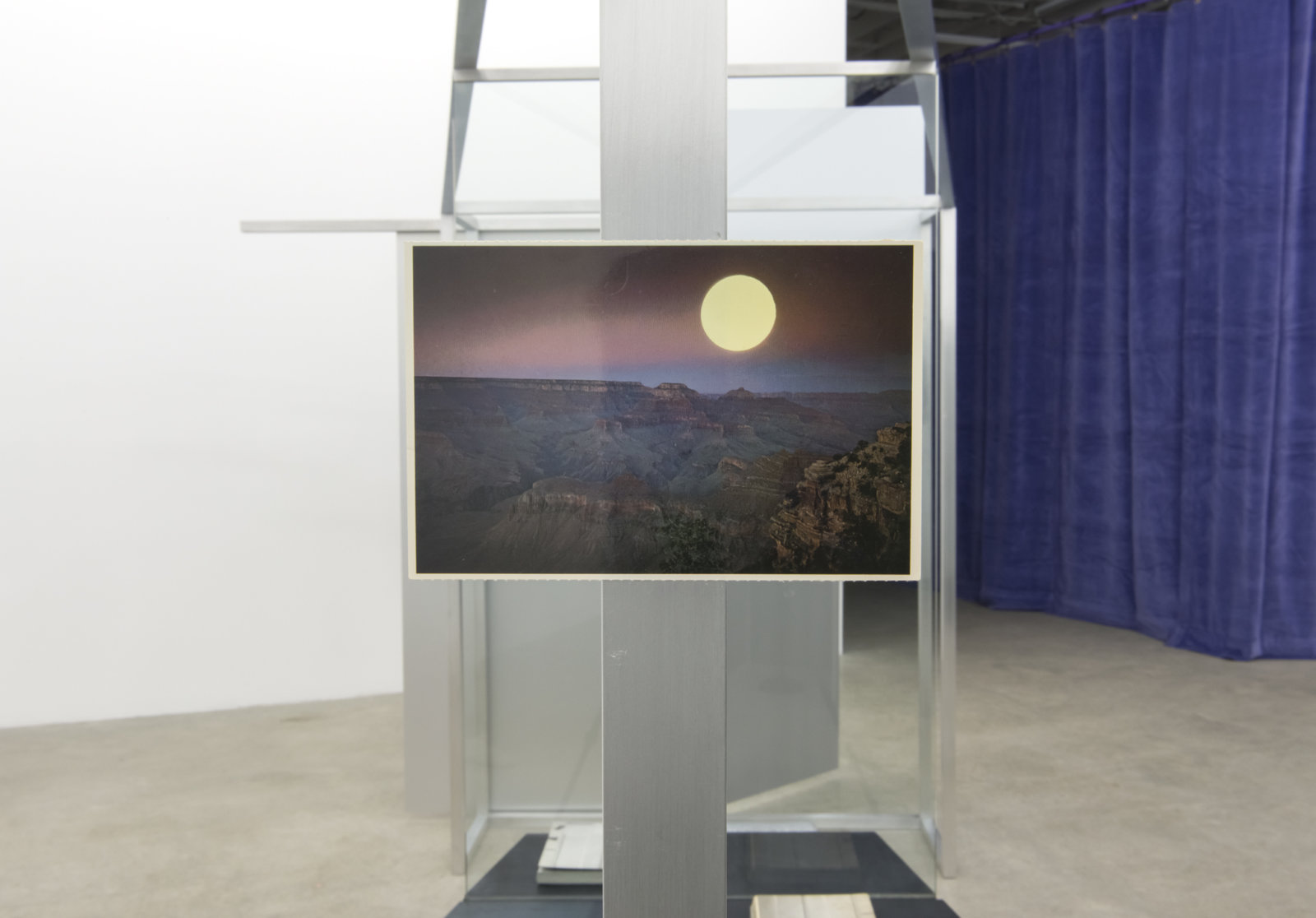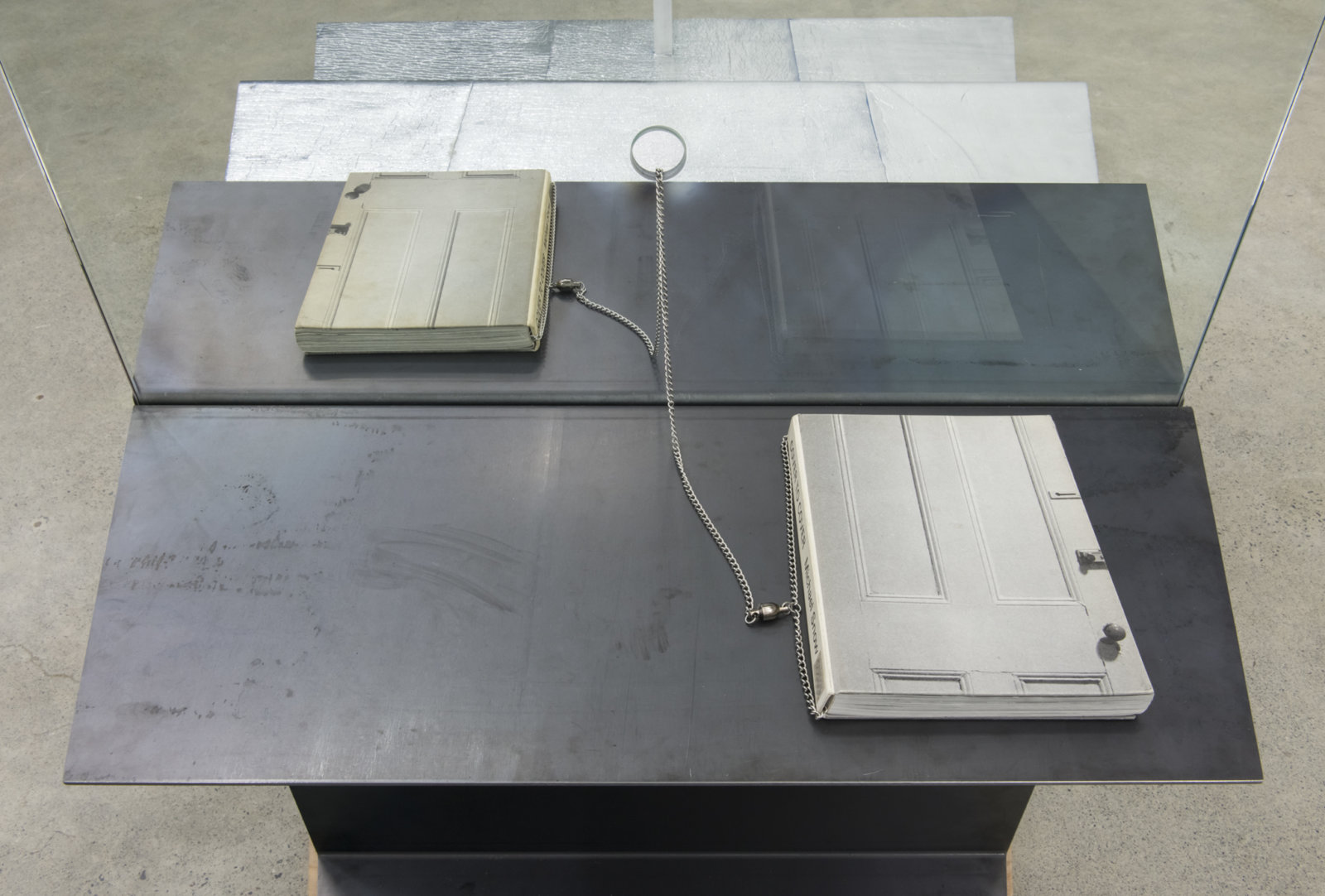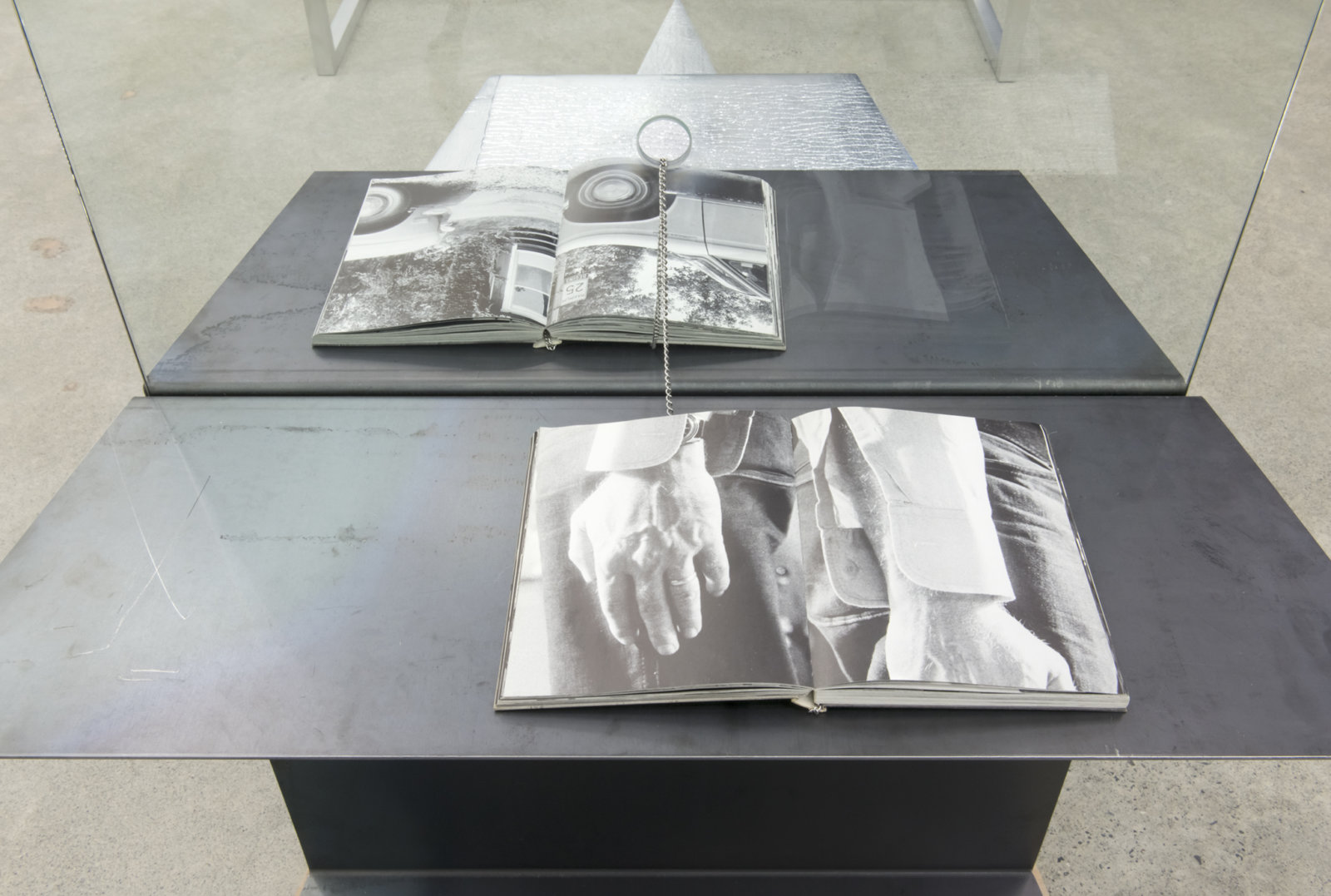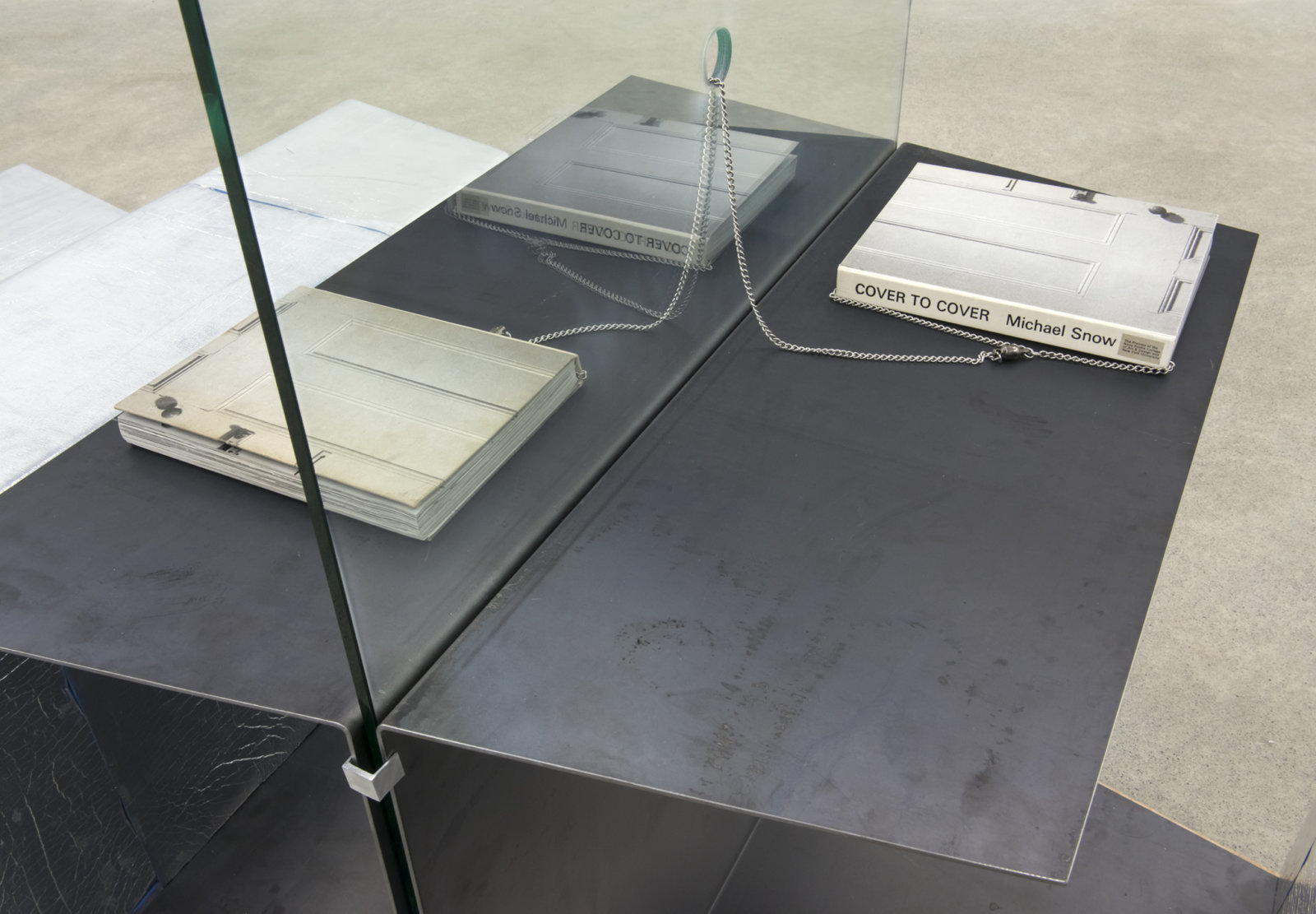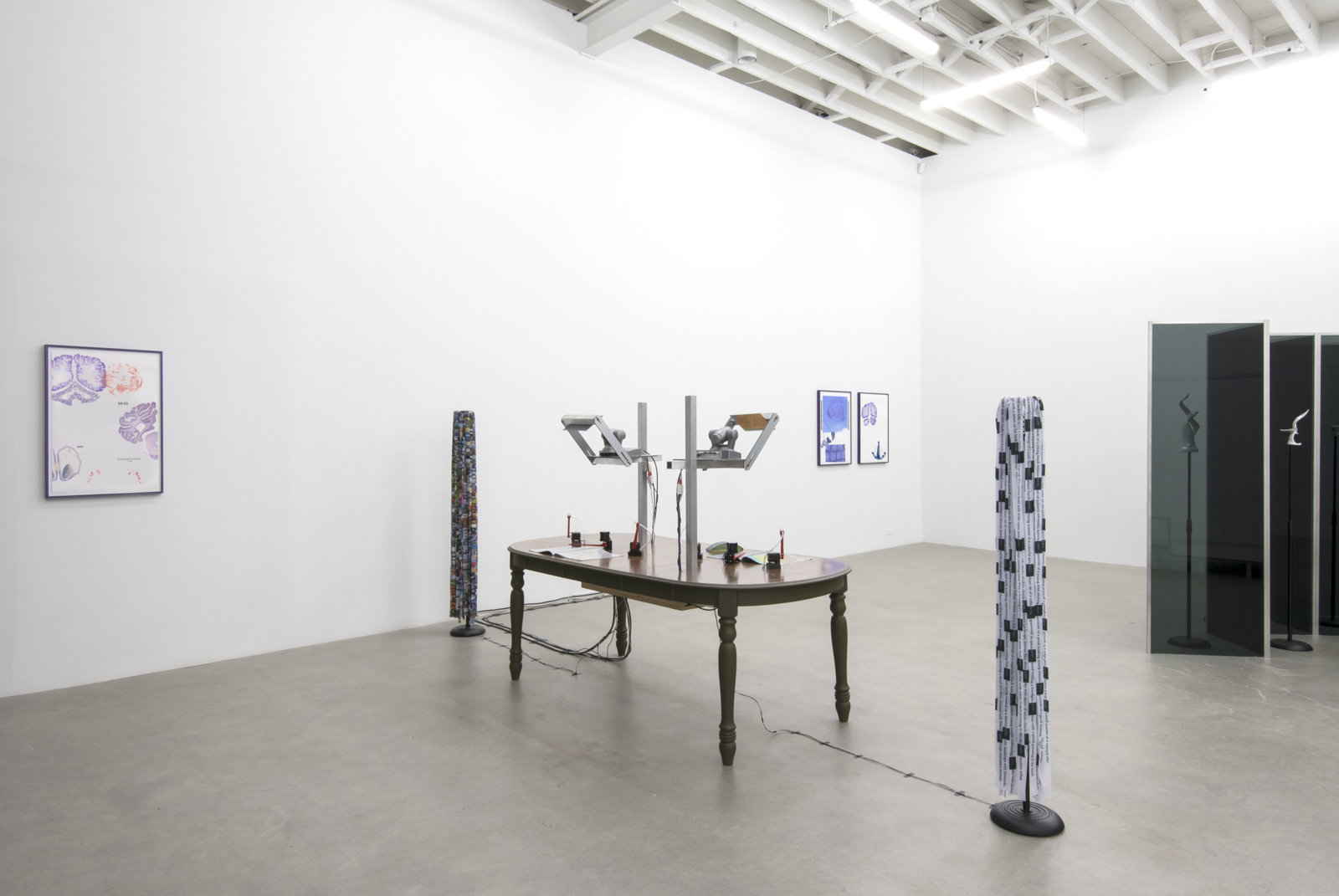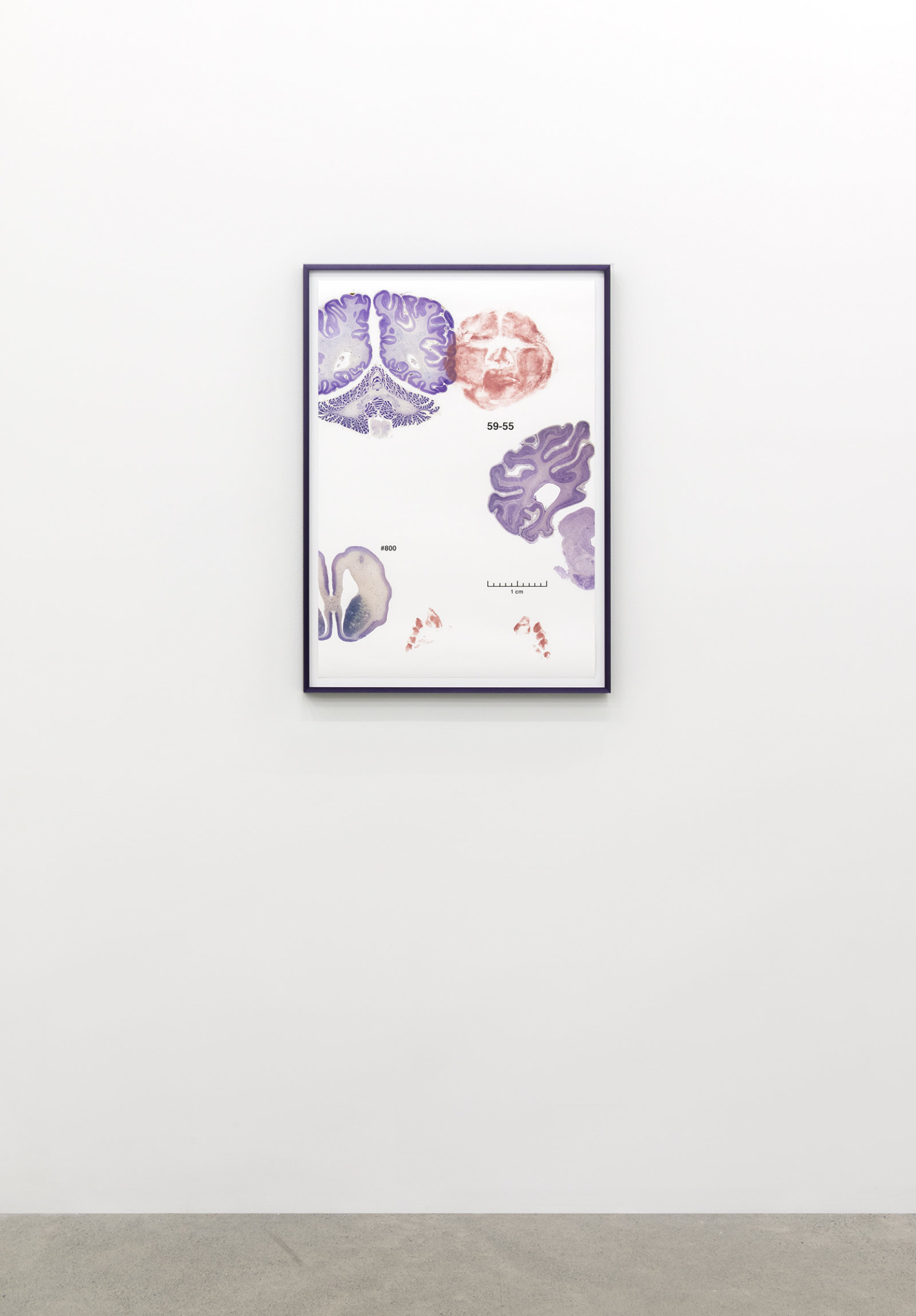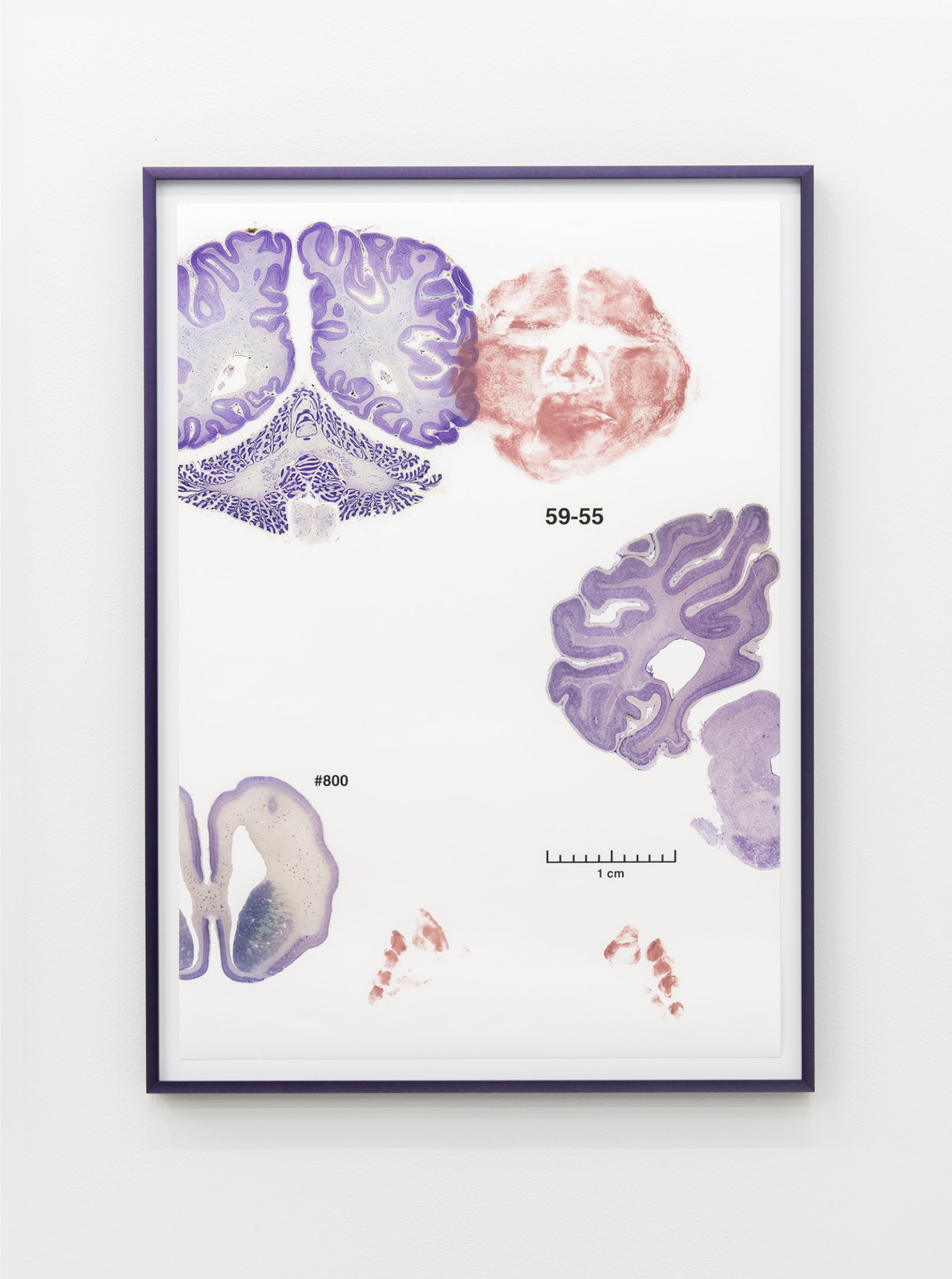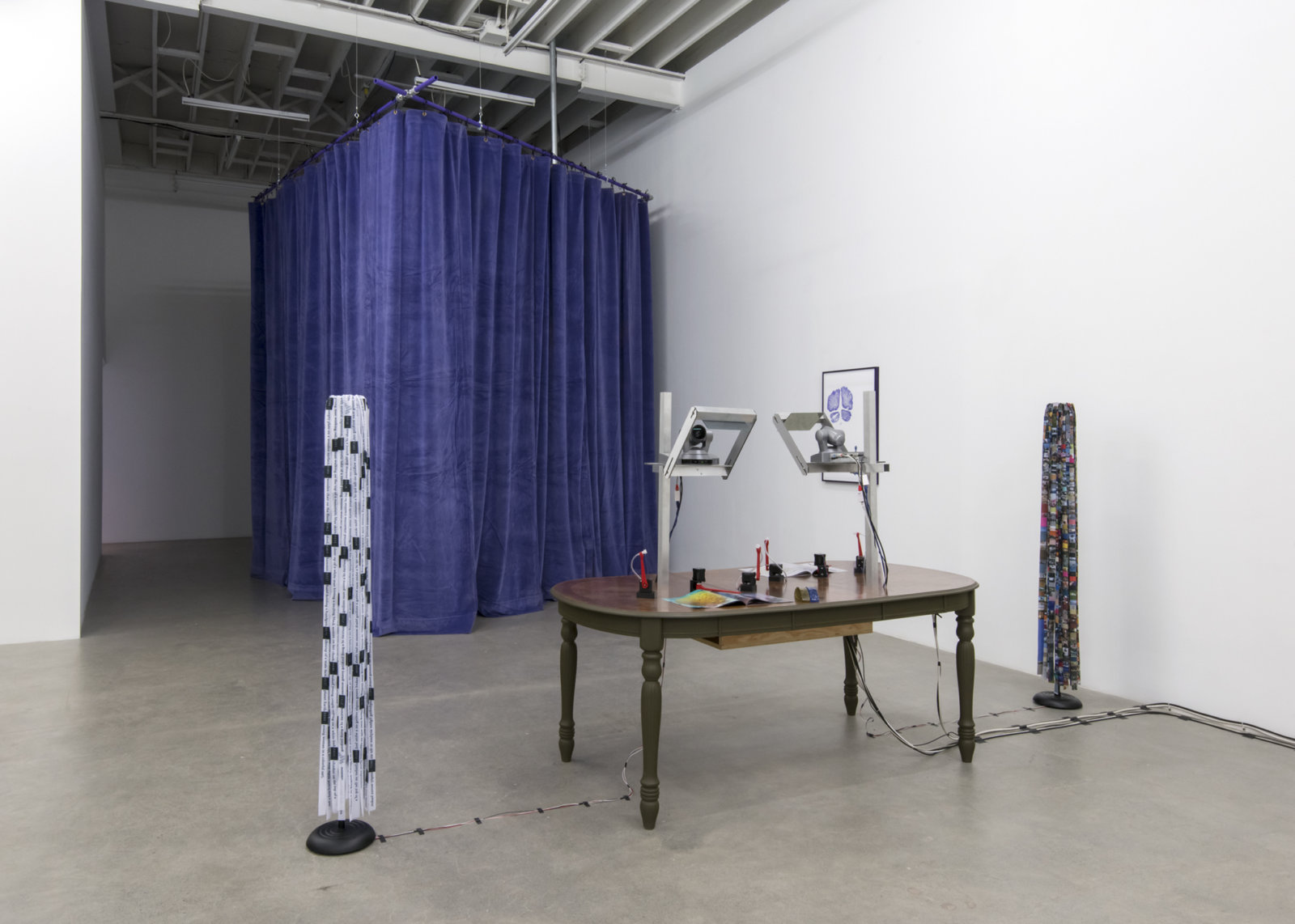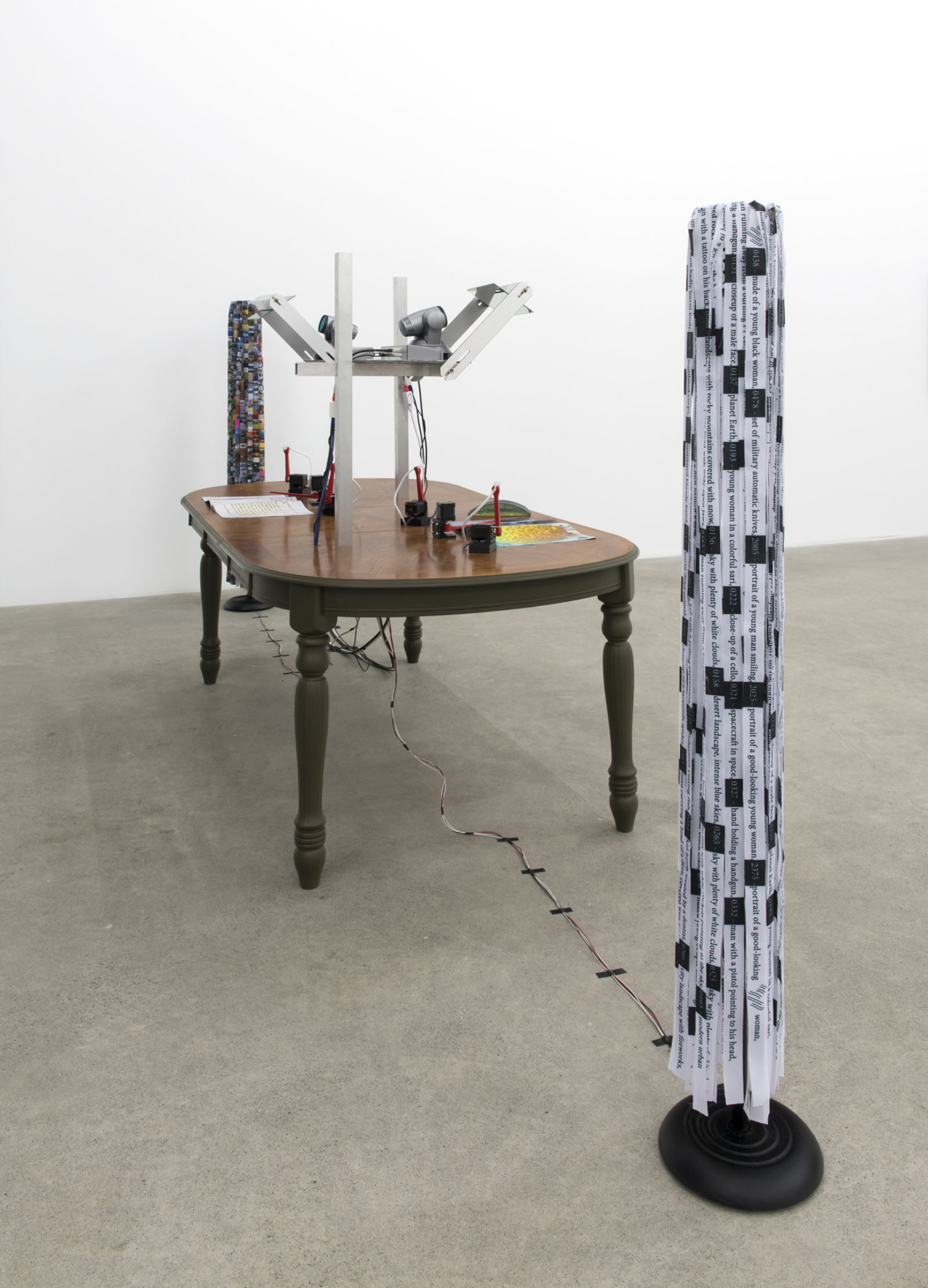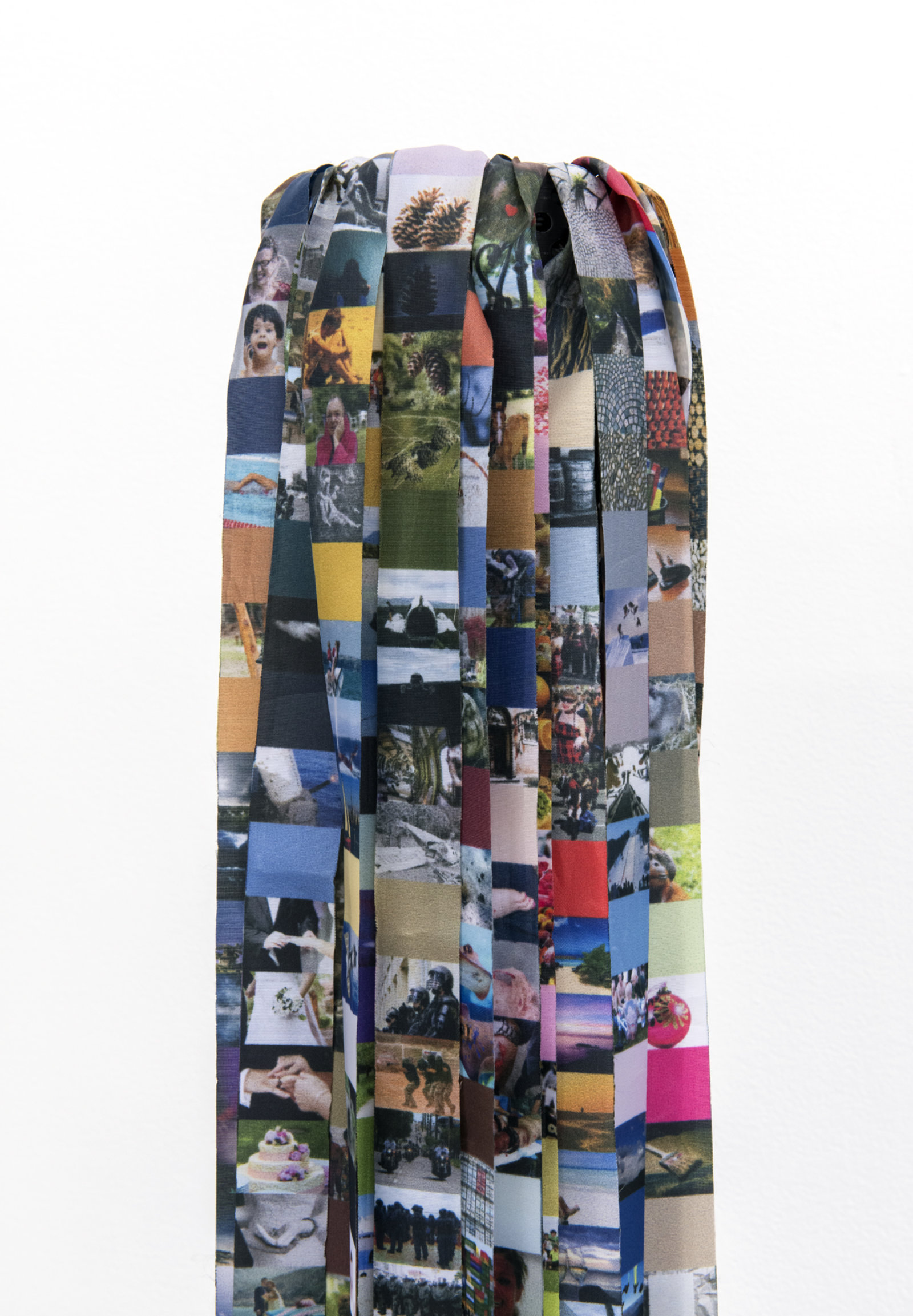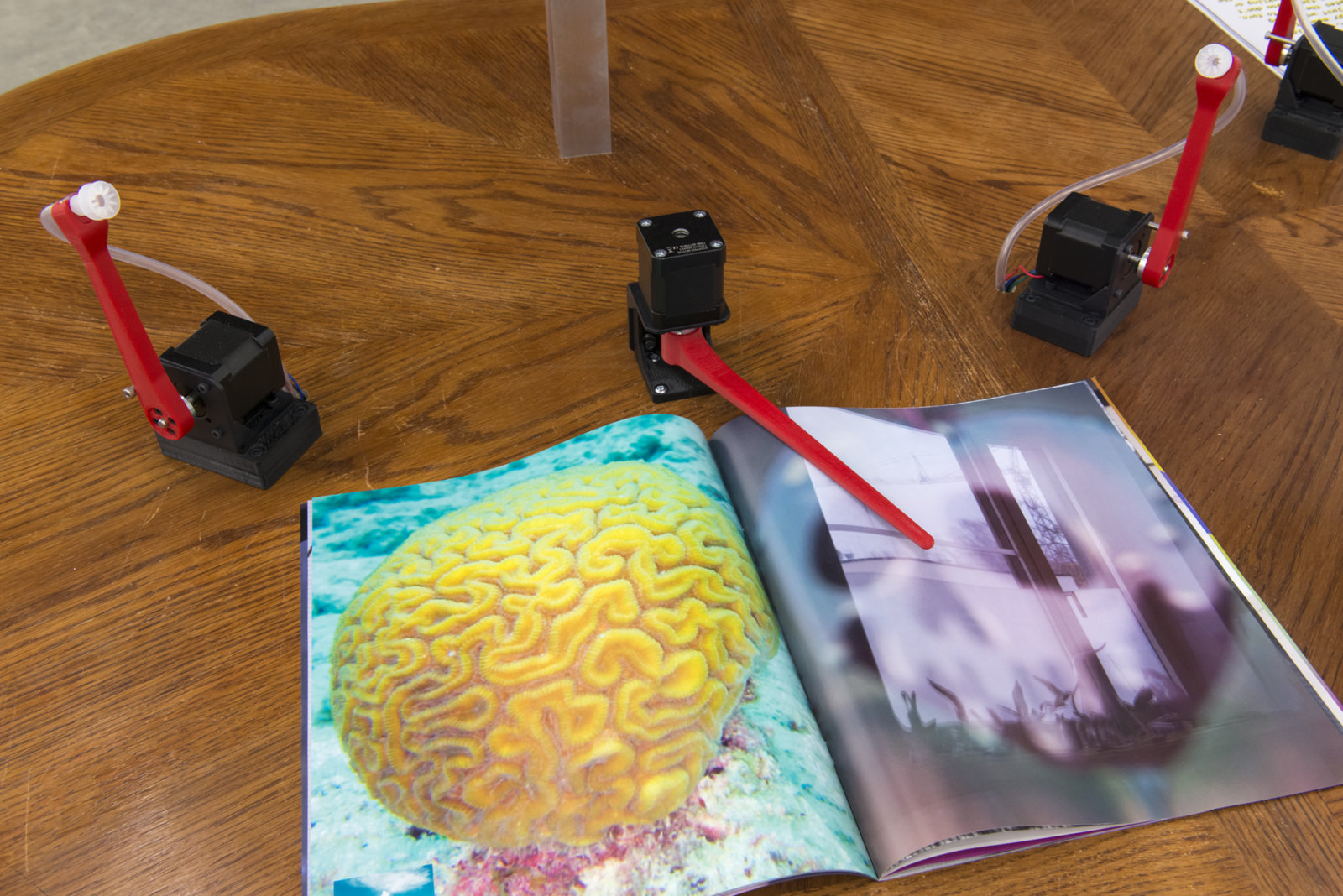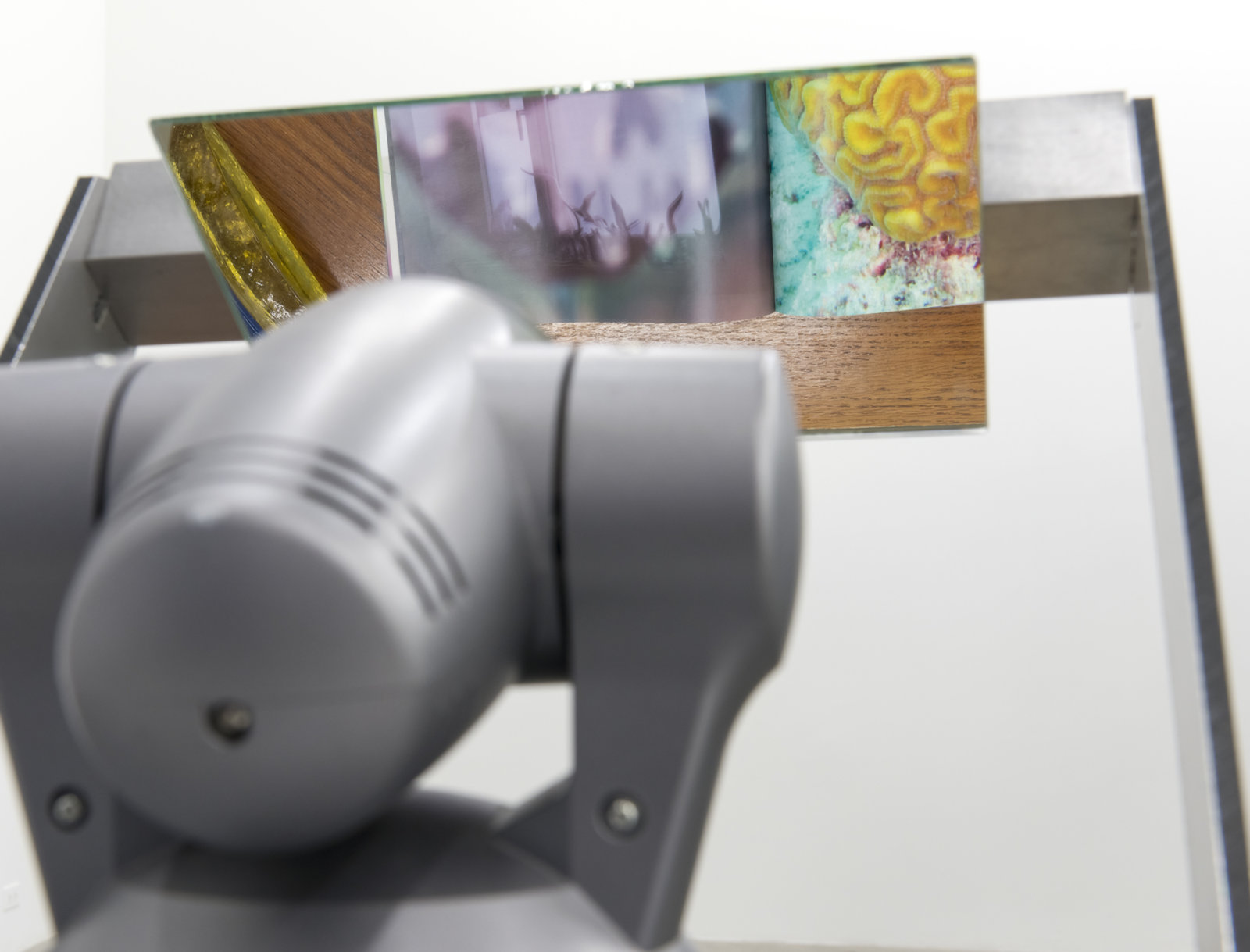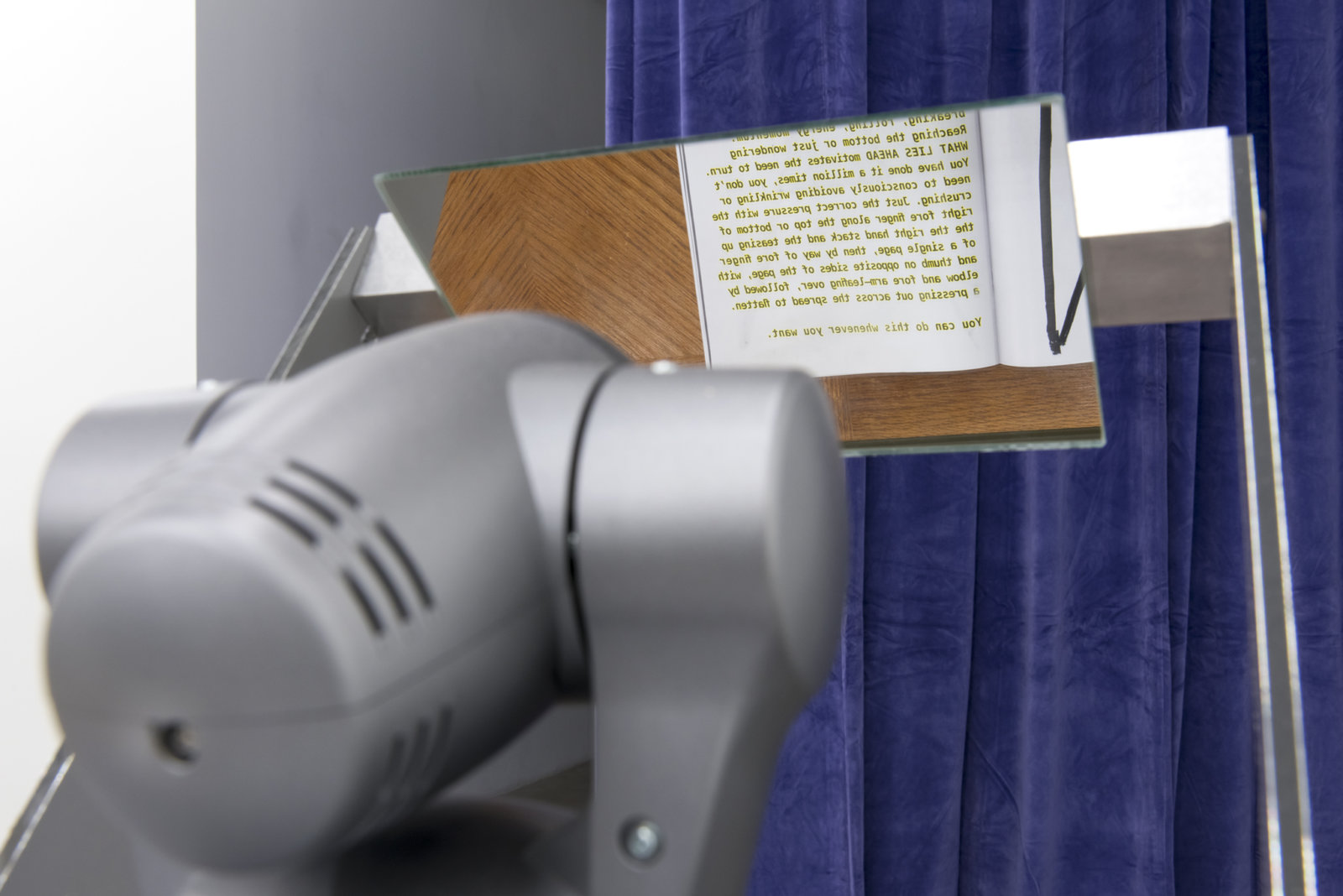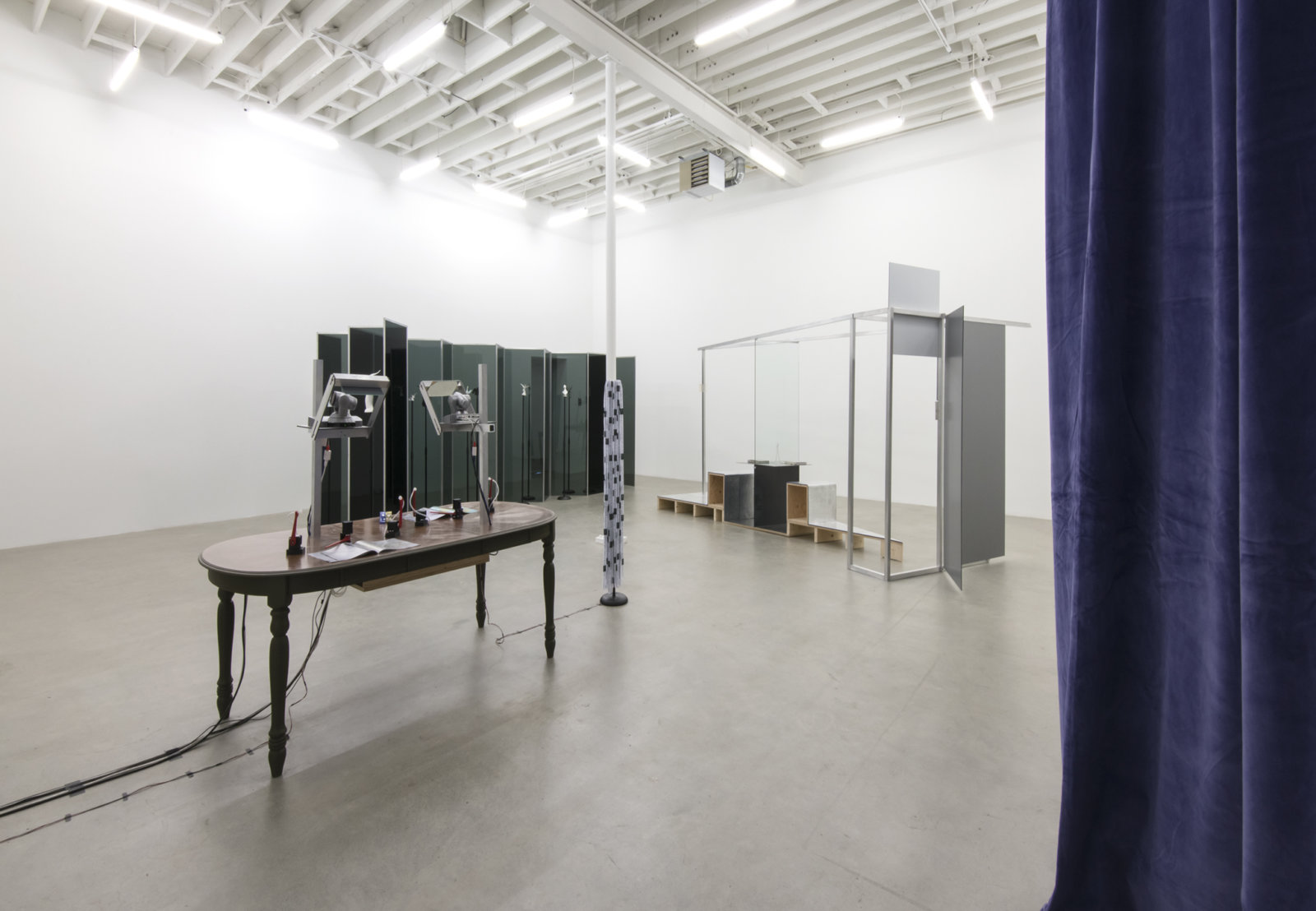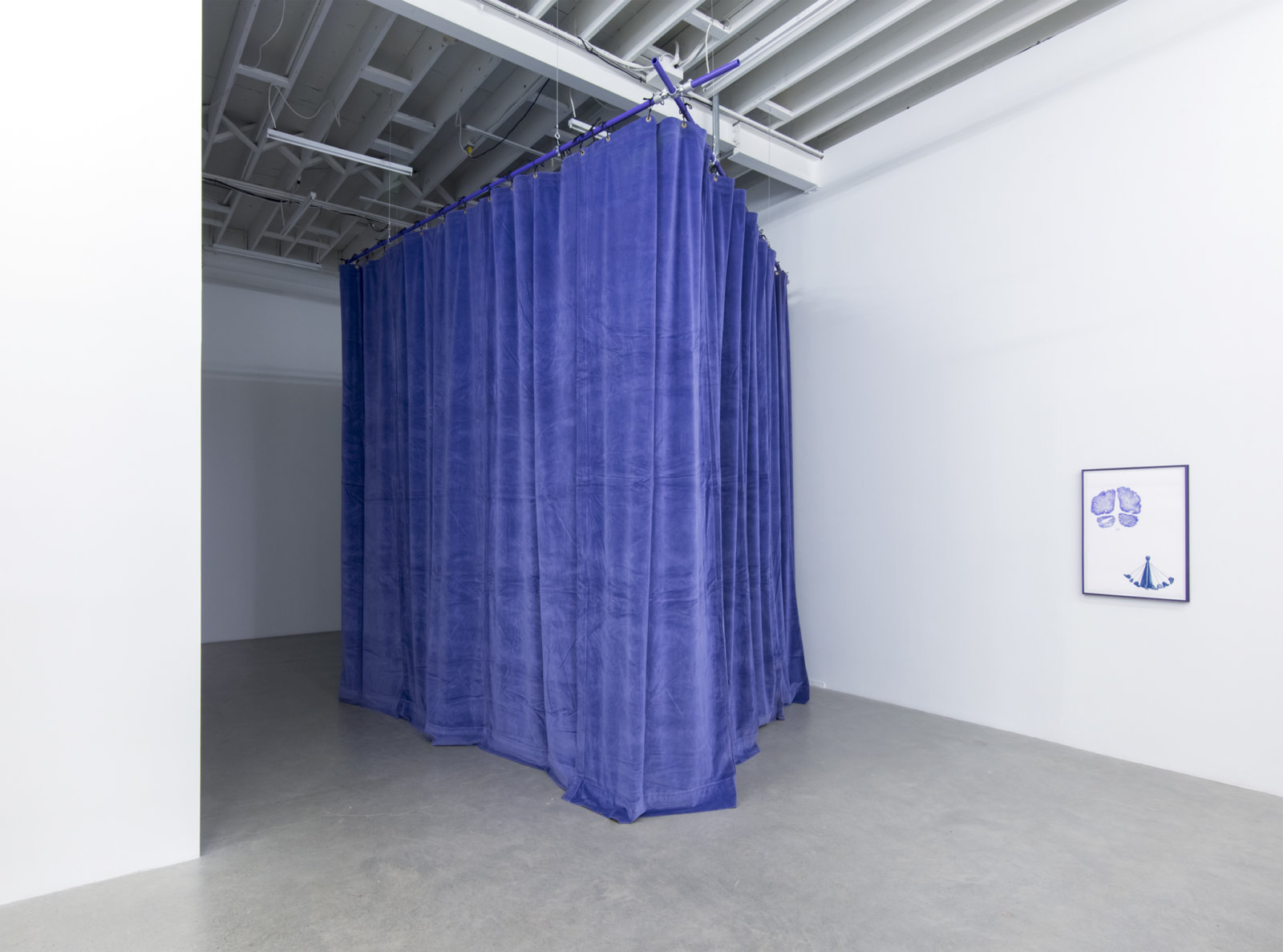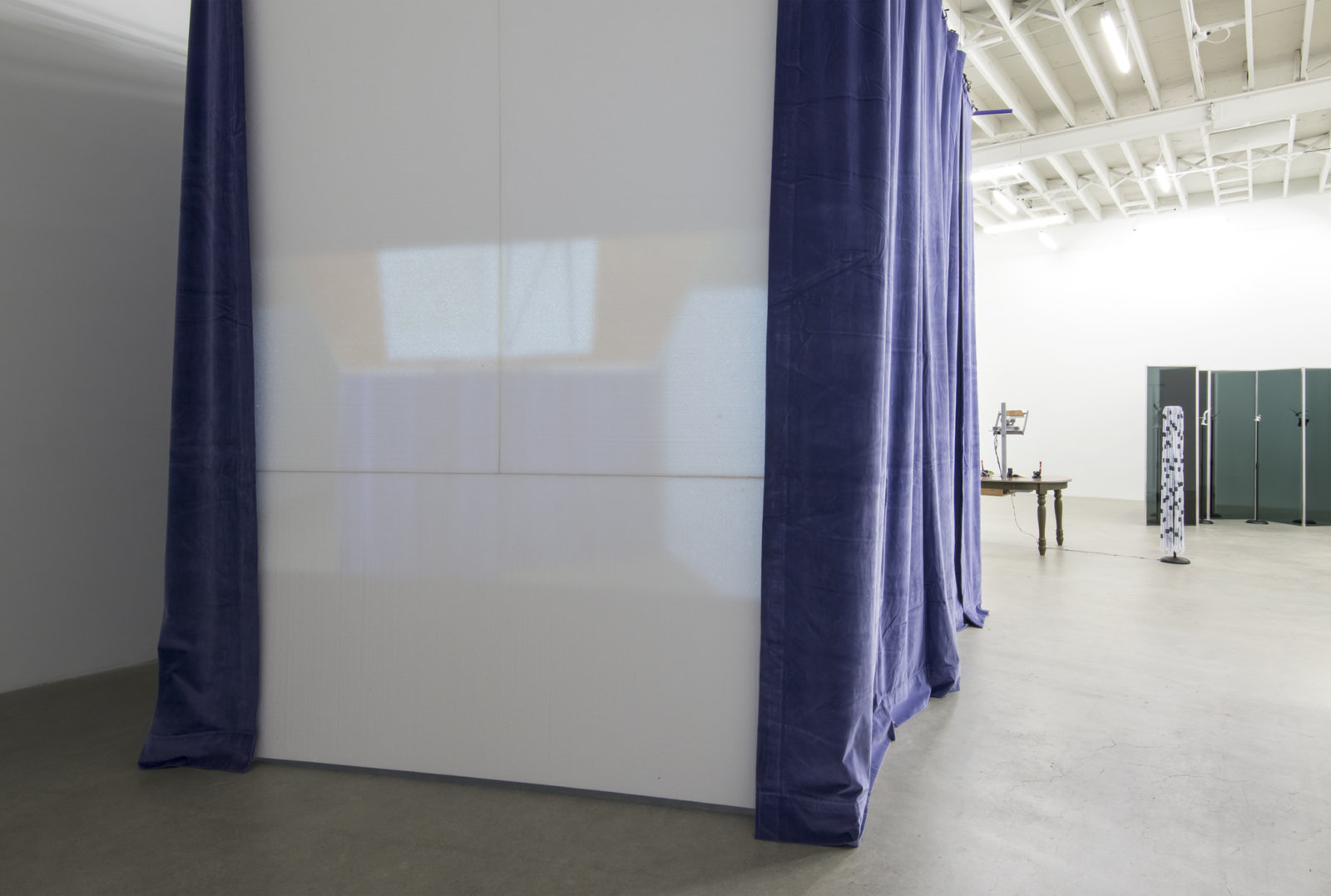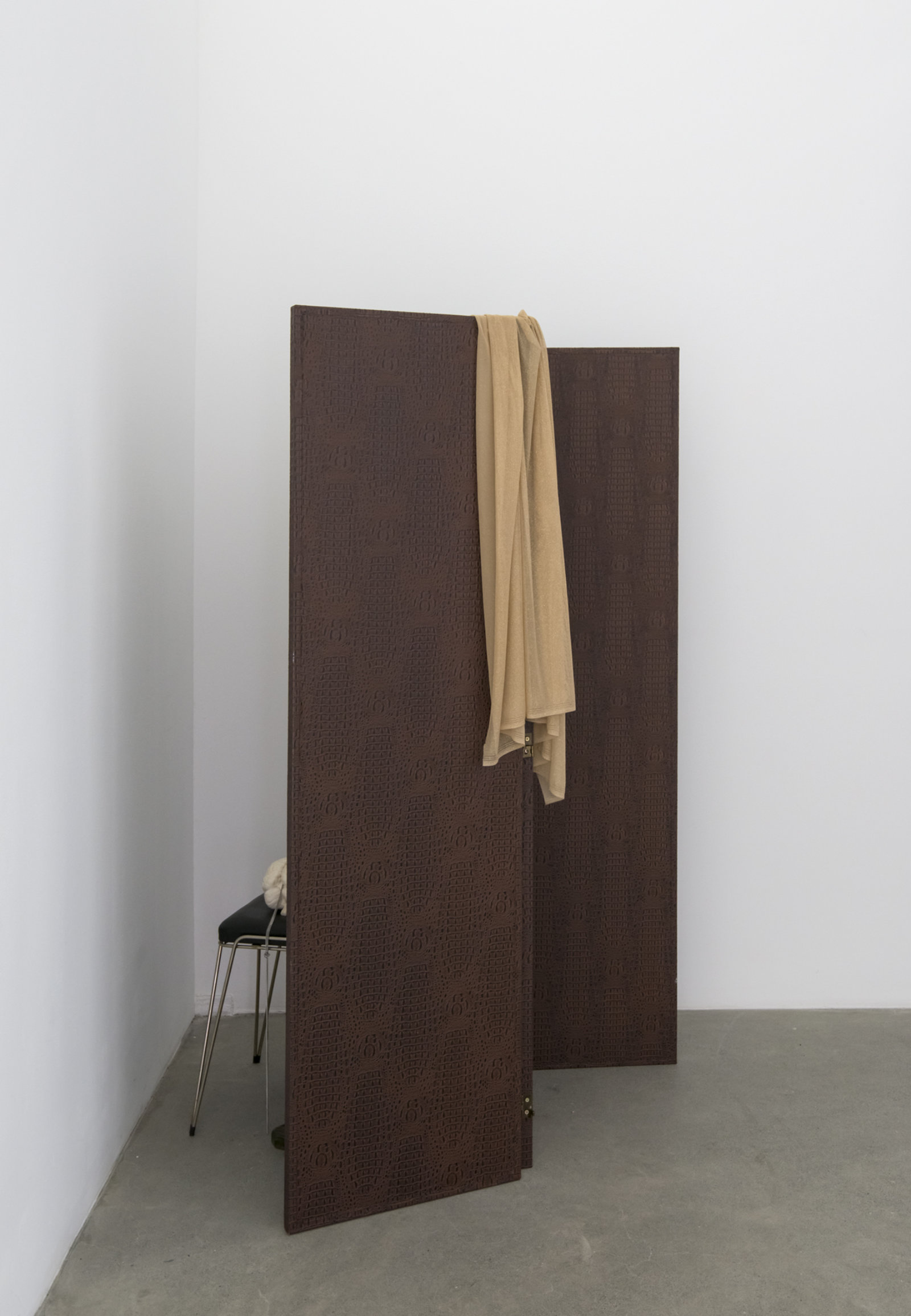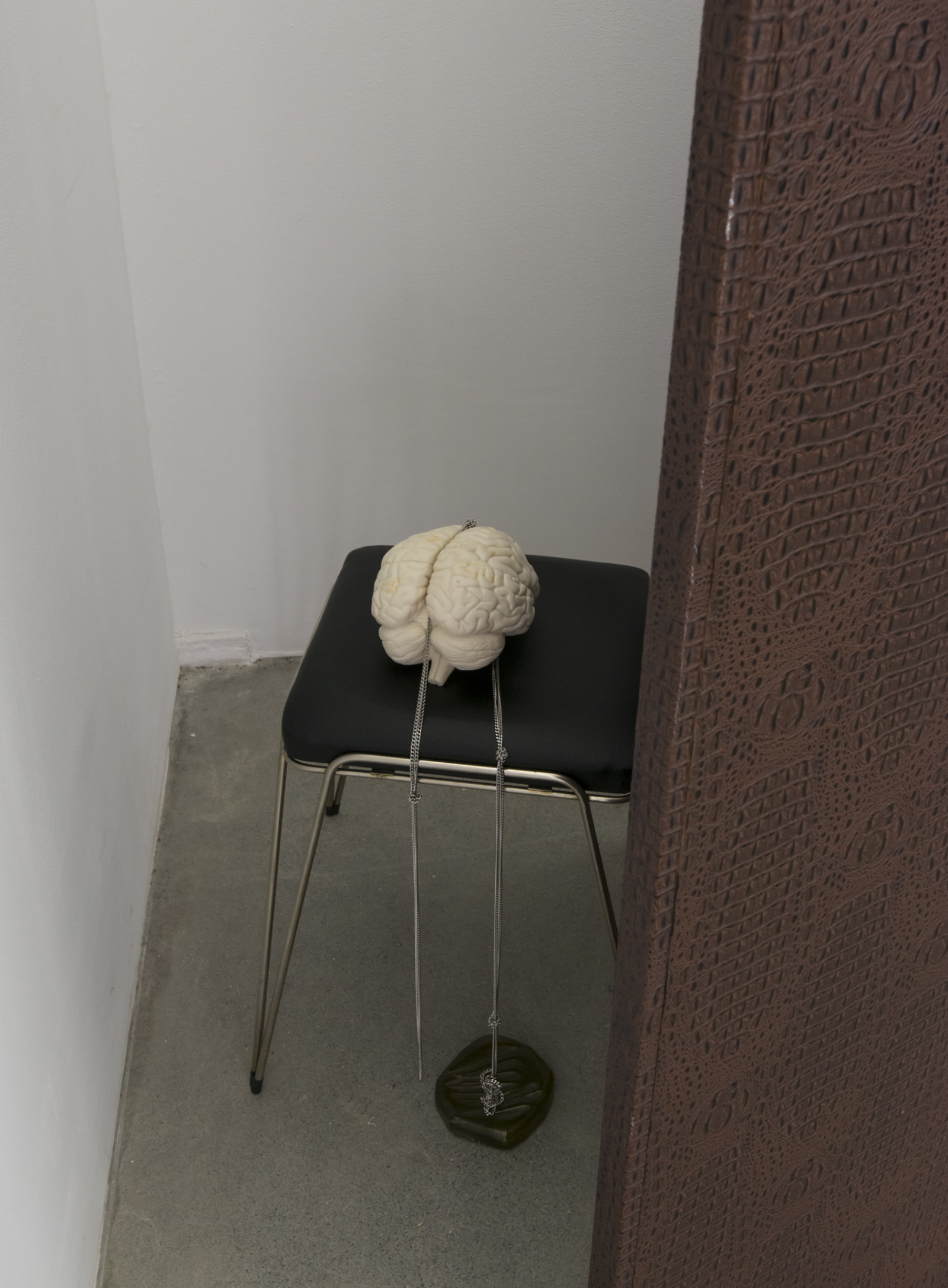Judy Radul – Words No Pictures Pictures No Words, MAY 11–JUNE 16, 2018
Judy Radul
Words No Pictures Pictures No Words
May 11–June 16, 2018
Catriona Jeffries
Just a couple of inches below your brain is a tongue in cheek. Words No Pictures Pictures No Words features new works from Judy Radul’s extensive experimental practice that merges form, media, cognition, language, humour and emotion. The exhibition is a staging ground for a set of interconnecting experiments as artworks—active, dynamic and surprising complexities of visual phenomena. Together they make a multifaceted looping chain of operations.
Following her related solo exhibition at Witte de With concerning doors, windows, pages and video as cultural techniques, here again cameras, screens, doors, glass, books and magazines are considered equal media; their forms and materialities connect to consciousness and structure our reality. Think forms, not semiotics.
The works themselves include a room-dividing screen made of translucent smoked glass. Its lively surface at once reflects itself, the viewer, the gallery, and the assortment of ceramic birds seen through the glass which act as placeholders of visual focus. Also included is a reading pavilion staging the connected but separate reading of two copies of Michael Snow’s 1975 intermedial artist book Cover to Cover, itself a physical negotiation of the page and the cinema. The installation Man’s Hands (Words No Pictures Pictures No Words) comprises two automated page-turning machines, two artist magazines, two video cameras, two kinetic sculptures, and a small cinema enclosed by a theatre curtain, together making a compositional circuit of vision, robotics, mechanics, images, words and materials. Along with the custom camera-motion control and live-video presentation system that Radul has developed over the past nine years, the page-turning machines are an evolving form in her work.
Turning a page is an increasingly obsolete gesture, its recto/verso encounter replaced by the “swipe.” The page-turning machine turns something that is very easily, even thoughtlessly done by most of us, into a complex mechanical task, here, turning the pages of Radul’s artist magazines. This custom-designed automation—a blend of DIY and sophisticated programming and fabrication—creates a kind of “bad actor”: a machine that makes each step of a thoughtless task into a calculated and segmented operation.
The turned pages are being “read” by video cameras, their occasionally eccentric framing, motion and rhythm choreographed by the artist. The magazine titled Words No Pictures comprises words about hands, hand transplants, perception, experience and brain plasticity. It includes newspaper narratives concerning the first single, and one of the first double, hand transplant recipients as well as quotes and a few lines freely adapted from Maurice Merleau-Ponty’s last work, The Visible and The Invisible, 1968. Mearleau-Ponty was continuously describing the things at hand—including his left hand touching his right hand touching something—while trying to articulate a deep interconnectedness, beyond the object subject divide. Also sampled is Brian Massumi’s 2011 publication, Semblance and Event, for his description of the rolling, turning and returning of the waves and troughs of experience.
Pictures No Words is a picture-only magazine which plays with analogues for brain imagery. The tiny images which punctuate the picture sequence are taken from an archive of images based on the International Affective Picture System, a database of standardized pictures ranging from the banal to the erotic to the disgusting, designed for studying emotion and attention, widely used in psychological and cognitive research. This Open Affective Standardized Image Set (OASIS), an open-access online stimulus set containing 900 colour images depicting a broad spectrum of themes, including humans, animals, objects, and scenes, along with normative ratings on two affective dimensions-valence (i.e., the degree of positive or negative affective response that the image evokes) and arousal (i.e., the intensity of the affective response that the image evokes).
The kinetic sculptures shake fabric strips printed with the same images used for cognitive and affective testing, as well as descriptions of the images. These short, strangely evocative attempts at denotation are excerpted for research papers, where, out of necessity to compile data and prepare reports into which dozens of pictures cannot be placed, the images must be described in writing. In these translations from image to text, the descriptions also unwittingly reveal gender, race, and cultural biases.
In Words No Pictures Pictures No Words, Radul continues her ongoing experiments in the tragicomedy of categorical thinking and description, evoking, but purposely never reaching the goal of representation. Any suggested dichotomy between words and pictures is questioned, and recto/verso is reversed, expanded, repeated and refracted in multiple circuits.
Documentation by SITE Photography.
